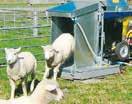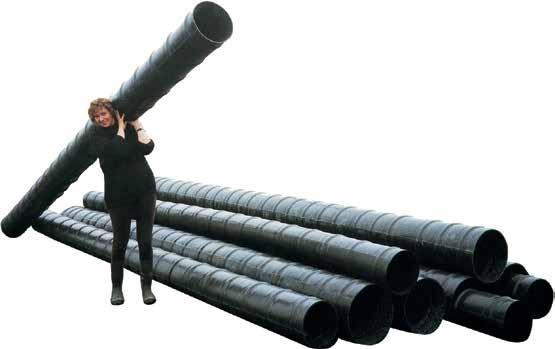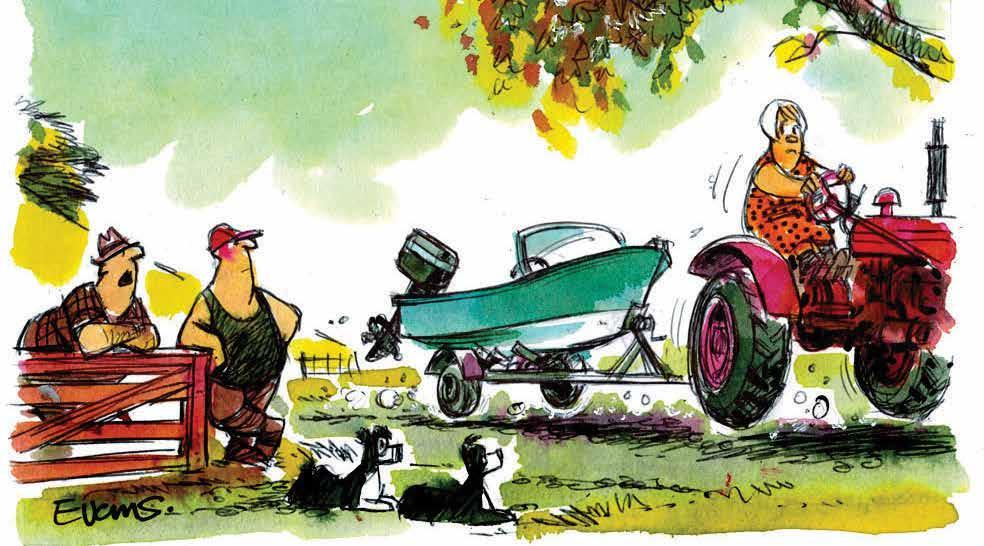

Udderly




Udderly

BEEF + LAMB New Zealand chair Kate Acland says while farmers are quite positive about the new Government, the economic situation on farm is “pretty brutal”.
Lamb prices are 20% below their five-year average and mutton prices down 15%.
“There is optimism around the Government but there’s a lot of pain in the sector,” she told Rural News
“I think we will come out of this –the medium to long term view is quite positive.”
Acland points out the B+LNZ’s economic service analysis shows that sheep farmers are facing their lowest year of profitability in 15 years.
There are number of factors affecting NZ lamb price. Among them is Australian output flooding overseas markets. Over the past few years, Australian farmers have been able to build up their flocks and take advantage of favourable conditions. Sheep numbers across the Tasman are at the highest they’ve been since 2007.
The shipping crisis in the Red Sea isn’t helping either. Add to that rising inflation on farm.
Acland points out that on farming inflation was 16.3% last year and 10% year before that.
She says there are some green shoots emerging, like rising export volumes to the lucrative UK market, but the effects are yet to flow on to farmers.
The new coalition Government has promised to dismantle legislation that impacts the agriculture sector, including legislation around the contentious emissions targets and pricing.
Acland says they have been in regular contact with the new Government.
In December, representatives from
B+LNZ, DairyNZ and Federated Farmers met with Agriculture Minister Todd McClay.
Acland says the three farmer organisations are working together to present pastoral sector issues together to the Government and discuss how to solve them.
“We’re stronger working together; we don’t want to be fighting each other in the Environment Court.
“There always will be tension but nobody wins by fighting among ourselves.”
Acland says she doesn’t agree with emissions pricing but accepts that a

pathway must be found to manage emissions coming from agriculture.
“We need a pathway that balances the need for some emissions reduction, with the need for a productive and profitable agricultural sector.”
@rural_news
facebook.com/ruralnews
Agriculture Minister Todd McClay with a plate of the best New Zealand lamb, which he helped cook to celebrate National Lamb Day at Parliament recently. The special BBQ was held to commemorate the departure of the first shipment of frozen carcasses of sheepmeat to the UK from NZ on the ship Dunedin on the 15th of February 1882.
More than 100 people, including representatives from all the political parties, diplomats, farming leaders and officials came along to partake of some delicious lamb sausages and kebabs. McClay says NZ lamb is the best in the world and he eats it regularly himself. The event at Parliament was just one of many held around the country to recognise the efforts of sheep farmers and processors and the high-quality lamb they produce and sell.
– More on page 4


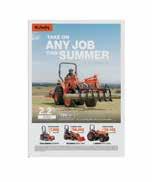



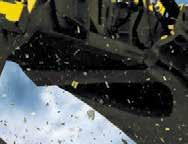



























In December, she was elected unopposed for another three-year term on the board of B+LNZ, which looks after the interests of sheep and beef farmers.
After spending 90 working days away from home last year on B+LNZ duties and a month-long “Christmas holiday” working on the family farm, Mt Somers Station near Methven, she’s ready for another year, which includes a strategy relaunch for the organisation.
“I’m ready for another exciting year and determined to win back farmer trust,” Acland told Rural News.
“I want to make sure that we are delivering what farmers want and need from us.”
Acland was thrust into the top job in March last year after previous chair Andrew Morrison was voted out by farmers, furious with B+LNZ’s work around emissions pricing.
The first 12 months was “a lot of hard work”. But Acland points out that she was well supported.

Leading up to last year’s AGM, Morrison was aware of the risk of being voted out. Acland was appointed deputy chair and was prepared to take over.
Post-AGM, Acland says she knew there were “real farmer connection, farmer trust problems” facing the organisation.
“It was clear to me that we absolutely need to rebuild trust with our farmers,” she says.
“We spent last year, quite deliberately, a lot of time on the road, in
front of farmers just trying to listen and trying to understand as part of our strategy rebuild.”
B+LNZ will release its revised strategy this year and Acland hopes farmers will embrace it.
“I really hope that when we release it, farmers will look at it and think that this is what I need from my organisation,” she says.
“The new strategy will ensure that we are delivering what our sheep, beef and dairy farmers want and need from us.
“As part of the strategy refresh, we spent lot of time with focus groups talking to farmers – just asking what they value and what they need.
“The strong message came through on the importance of our focusing on farm to improve farmers productivity and profitability.
“They also wanted us to continue to represent them on policy, but ensure that we are listening and properly representing their views.”
“We are determined to set up the organisation to be more agile and deliver on the advocacy space.
“We will advocate on sheep and beef policy issues like biosecurity, trade policy animal welfare and deal with environment-related issues as it relates to the beef and sheep sector.
“We are being quite clear, we won’t try to be everything for everyone and actually not delivering.”
Acland believes farmer trust in the organisation has improved, “but we are not there yet”.
B+LNZ has also reviewed its policy and advocacy, as part of a remit passed at the last AGM. An independent consultant was hired for the review.
“One of the key things out of that is we absolutely need to be transparent if we do anything,” she says.
Three major banks are forecasting opening farmgate milk prices over $8/ kgMS for the 2024-25 season, which kicks off June 1.
ANZ agricultural economist Susan Kilsby notes that dairy commodity prices are steadily trending higher, and this is expected to continue in coming months.
ANZ is forecasting a milk price of $8.50/kgMS next season.
“If achieved, this should deliver some profit back into the industry, as
this price will end up near breakeven for the average farm,” says Kilsby.
“Farms with high debt levels are finding it particularly challenging to keep up with the rapid rise in interest rates and other costs.”
Westpac’s chief economist Kelly Eckhold believes farmers will get $8.40/kgMS next season.
“Combined with an easing in prices for some on-farm inputs, this should leave farmers modestly above breakeven on average,” Eckhold says.
He points out that near-term, world dairy prices are expected to remain relatively steady.
“Growth in the Chinese economy is expected to remain subdued, though we have seen this counterbalanced more recently by stronger demand from other regions.”
Global milk supply is expected to grow modestly this year, with New Zealand production likely to be slightly up on last year. In contrast, environmental regulations have driven a substantial drop in European milk production recently, he notes.
BNZ is the most conservative of the three banks, lifting its next season’s forecast milk price by 20c to $8.20/kgMS.
Senior economist Doug Steel says Global Dairy Trade (GDT) dairy prices have continued to improve in the New Year to now be 30% “above their ding-dong lows” of last August.
“Dairy prices have fully recovered from last year’s dip. This is only to around average levels on an inflationadjusted basis, but that is a lot better than being well below normal.”
As for this season, BNZ and ANZ are forecasting a milk price of $7.90/ kgMS, 10c above Fonterra’s mid-point of $7.80/kgMS. ANZ is sticking to its forecast of $7.70/kgMS.
– Sudesh Kissun
Speaking to Rural News on the occasion of National Lamb Day,
made more aware of how good NZ lamb is and that it’s not hard to cook.
THE MEAT industry has a job to sell the value proposition of lamb, says Agriculture Minister Todd McClay.
McClay says he doesn’t necessarily believe that New Zealanders have gone off eating lamb, but says they need to be
McClay says lamb is a high-quality product full of iron and there are plenty of places that people can go to find


recipes to cook lamb –including YouTube. He says NZ has a great story to tell the world just how good our grass feed lamb is.
“Many years ago, when I lived in Brussels working for the European parliament, I’d buy a shoulder of NZ lamb and we’d invite friends over and have this for dinner.
Afterwards they would rave about the flavour and they would want to know where it came from, because it was more flavoursome than the lamb they were used to – which was European,” he says.
McClay says the reason is that NZ lamb is grass-fed, unlike European lamb.
The celebration of NZ lamb comes at a
time when the industry is having a rough time with low returns and high inputs costs. He notes the oversupply of Australian lamb on the market, along with a sluggish Chinese economy and other geopolitical issues are causing grief to farmers.
McClay says while the Government can do little about the problems in market, it is determined to tackle lowering the costs imposed on farmers by the previous government.
He says his focus will also be on opening new markets, getting more FTAs and, to do that, he says, plans will be revealed soon about more trade missions which will involve farmers as well as companies and officials.
MEAT INDUSTRY Association chief executive, Sirma Karapeeva, says she hopes that national lamb day will now take place every year.
She was one of many industry leaders who attended the BBQ at Parliament recently to commemorate the first export of frozen sheep meat to the UK in 1882.
She says it is exciting to publicly celebrate the success of the industry and to acknowledge the fabulous job that farmers and processors and others in the sector are doing.
Karapeeva says the BBQ at Parliament and all the events that have happened around national lamb day were exciting.
“We Kiwis should be a little bit more forward-leaning and much more proud of what we have achieved,” she told Rural News
“When you look at where we started and where we are today, it’s a remarkable achievement. We are quite humble folk, and we just take it for granted and don’t necessarily stand for a lot of pomp and ceremony and that stuff,” she says.
Karapeeva says what NZ has achieved over the years took a lot of hard work and that needs to be acknowledged. She says the country has moved massively in 40 years from the days of freezing works to highly sophisticated processors.
“No longer do you get those mass carcasses being exported as a very low value commodity. Our processing companies are exporting food to discerning consumers all around the world and that is huge shift,” she says. – Peter Burke
PETER BURKE
peterb@ruralnews.co.nz
CONSTANT RAIN over the past year has made it extremely hard for Gisborne’s major vegetable grower Leaderbrand.
According to its chief executive, Richard Burke, the Tairawhiti region has had an incredible 2000mm of rain since February last year and this has had a major effect on their planting programme, ground conditions and crop yields. He says the weather, including Cyclone Gabrielle, has created some changes and challenges for his company.
“This has made supply quite lumpy,” Burke told Rural News
“Sometimes supply has been tight and some-

times it’s been plentiful and, in the end, that’s probably given consumers more value.
This is because they have been able to capitalise when there is plenty of product around. So, as of today
we have got plenty of challenges ahead of us,” he says.
Burke says the immediate issue they face is not major infrastructure such as roads, rather it is drainage to dry sodden paddocks. He says their
greatest challenge is to clear the drains and get them working. With the heavy clay soils, the rain just sits on them, the soil compacts and gets damaged.
“The result is that it impacts on our planting programmes.
“What is needed is a long-term approach to drainage in the region,” he says.
Burke says in recent years there has been big investment in environmental issues such as reducing carbon emissions, but less money invested in repairing vital infrastructure such as drains – equally important in terms of crop production.
He says with this delay in maintenance of drains,
ACCORDING TO a new study from the University of Otago, there was a visible rural/urban divide in Covid-19 vaccination rates.
The study, Rural-urban variation in COVID-19 vaccination uptake in Aotearoa New Zealand: Examining the national roll-out, sought to analyse vaccination uptake in rural versus urban settings during the peak period of New Zealand’s national vaccination roll-out in 2021.
The research found varying levels of vaccine uptake among different
population groups. The study, published in Epidemiology and Infection, used a national dataset of 4.3 million health service users.
According to the study, at the national level, overall vaccination uptake in rural areas lagged most urban areas, with rural areas lagging behind their urban counterparts by 5-11% by December 2021.
However, the research found this gap is not as clear when also looking at vaccination rates in terms of ethnicity, age, and/or region.
WELL BEFORE Cyclone Gabrielle struck, Richard Burke was advocating for a longterm sustainable infrastructure plan for the Tairawhiti region.
The cyclone brought to the fore a problem that has existed for decades, with the east coast constantly struggling to get a strong roading network in this vital farming and horticulture region.
Despite all the talk about the need to improve the road, Burke feels the mentality of those who could change things is still in ‘repair mode’. Having said that, he says one cannot fault the investment that has gone into repairing road
a lot of catch-up work is required to get operating properly to cope, not so much with a cyclone, but the ordinary rain events that the region is subjected too.
“For example, we
infrastructure.
“But there doesn’t appear to be emerging signs of a long-term approach to once and for all resolving some of the bigger issues around sustainable infrastructure that serves the needs of Tairawhiti,” he says.
Burke says, before Covid struck, there was a group of local leaders aligned in their thinking on this, but this doesn’t appear to exist today. For things to happen, says Burke, key local people need to get together and develop a strategy and plan that can be sold to central and local government.
didn’t get any land levelling drainage work done last summer because it was so wet, and you couldn’t work the land. It’s only really dried out this month and we are busy cleaning out our
drains, and the council ones, because there is a chance that they won’t get around to it. We are also doing a lot of land levelling to set ourselves up for this winter,” he says.
While vaccination uptake among older people in rural areas largely reflected urban uptake, vaccination rates among younger people in rural areas tended to be lower than those of younger people in urban areas.
Talis Liepins, the lead author of the study and a PhD candidate in the University of Otago’s Department of General Practice and Rural Health, says the findings suggest opportunities for improvements in vaccination delivery models for rural and urban communities and further highlights
the urban-rural divide in relation to equitable healthcare.
“It is important we advance general awareness around equity of access for rural populations and how health interactions for rural communities differ from urban communities,” says Liepins. The researchers also found “considerable variance” in uptake between rural older and rural younger people; with the rural urban differences much more apparent in those aged less than 45 years.
Co-author, Professor Garry Nixon, head of rural section in the department of general practice and rural health, says that these differences, which were visible across population groups, suggest possible different barriers to access.
Funded by the Ministry of Health COVID-19 and National Immunisation Programme, the study is the first of three exploring the COVID19 vaccine rollout in rural Aotearoa New Zealand.
– Jessica Marshall

A YEAR ago, Cyclone Gabrielle wreaked havoc at family-owned Taylors orchard and packhouse in Hawke’s Bay.
Apple trees were under water, covered in silt or both. Their newlybuilt state of the art packhouse, crammed with the latest automation and robotics, had half a metre of muddy sludge running through it, destroying all
the equipment.
But a year on, the Taylors have apples on their trees and miraculously repaired the packhouse to its former glory. A week ago, the family hosted a function to celebrate this achievement. The guests included Finance Minister Nicola Willis and representatives of Apples and Pears NZ and the companies that got the packhouse up and running in less than a year.
The family have been
operating in Hawke’s Bay for more than 100 years and during the season pack up to 250 tonnes of apples a day (that’s 2000 apples per minute) for export and employ 300 people, including RSE workers, to pick and pack the fruit. The present company, Taylor Corp, was set up in 1995 by Kelvin Taylor and wife Lynette.
For the Taylors the drama started the morning Cyclone Gabrielle

WHEN THE Taylors finally got to the packhouse after the cyclone subsided, they were greeted with an ugly mess of sludge and their new equipment lying at crazy angles.
They pumped 20 million litres of muck out of the shed and started the task of the rebuild. The building itself was sound, but the insulation in the ceiling had gone mouldy and had to be replaced.
Cameron Taylor says his father realised early they could not do everything, so they put the rebuild of the packhouse in the hands of one of their staff, giving him a free hand to complete the project. The plus side to this was that the packhouse was modern and the equip
ment in it was good.
“So, we simply decided to replicate this, which saved time and money because all the design work was done. The result is we now have an amazing packhouse which includes robotic forklifts and packing machines,” he says.
In just 12 months, the Taylors, with help from great people and friends, are back in business. Heading into the official celebration, Kelvin Taylor admitted to being a bit nervous but also pleased and proud of what has been achieved.
“Never doubted it would happen. I have been in the business for 56 years and I was never going to let this stop us from carrying on,” he says.
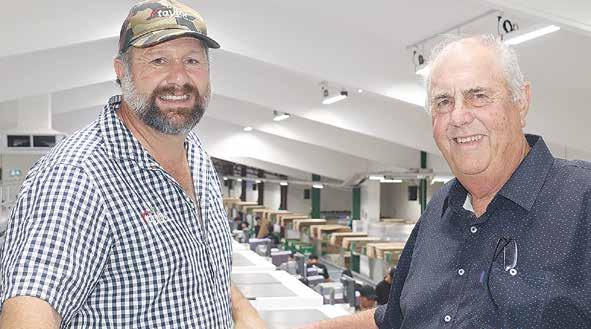
struck when Cameron Taylor, son of Kelvin, looked out the window and couldn’t see any apple trees. They were covered in water.
“These were old apple trees – five metres high – so I knew we were in trouble,” Cameron told Rural News. “We quickly got the family together and went to Dad’s place which was on higher ground,” he says.
The next few days were traumatic as he helped rescue his RSE staff and, working with helicopter pilot Geoff Keighley, plucked close to 150 flood-stricken people from roofs of their homes during the height of the disaster. His focus was on others, not his own business.
Flying over his own family orchard, Cameron could only gaze in disbelief at what he saw. “I could just see the top
A SPECIAL guest at the re-opening of the packhouse was Finance Minister Nicola Willis. She described the reconstruction of the Taylors packhouse as a milestone and something very touching for her.
“I was here a year ago with Cameron and the only way we could get here was by helicopter. The place was covered in mud and the devastation on Cameron’s face was just palpable, because you could sense his fear of the job ahead and whether this incredible packhouse would ever be rebuilt. So now to see the progress… and see it up and running again, it is almost miraculous,” she says.
Willis says the cyclone is one the biggest events in the history of NZ because it has devastated the lives of so many people. She says the agricultural industry was impacted terribly and so seeing that people have taken the effort to rebuild so that industry can get back on its feet is tremendous.
Willis says the Government is committed to helping fund the cost of removing silt and remediating the land, rehousing people and supporting the infrastructure rebuild. “Everyone can be very confident that our Government will back Hawke’s Bay and Tairawhiti for a full recovery,” she says.
also flooding around the orchard, including the packhouse,” he says.
For 72-year-old Kelvin
expansive operation and who’s lived on the property all his life, the sight was devastating. He
when he was just 18 years of age and now all his lifetime of hard work and dreams had been shattered. But again, his focus was on his staff and making sure they were safe and housed.
“We lost about fortyfive hectares of apple trees out of a total of 4500 hectares, but we have got new plantings that will help us through,” he says.
Despite the trauma of the cyclone, Kelvin and son Cameron quickly decided to rebuild the operation at all costs –to the extent that Cameron and his family are still living with his father while his own house remains wrecked.
Cameron says he felt he owed it to his staff and the wider industry to get the business up and running as quickly as possible rather than focus on his own personal situa-

AUSTRALIA’S DAIRY
import and export mix is “slowly trading places” with export volumes falling sharply in recent years while imports have spiked, according to Rabobank.
It’s recently released Australian Dairy Sector Outlook report notes that the overall trade profile for Australian dairy is in a period of transition, driven by factors including lower domestic milk production, an erosion of export competitiveness and more favourable domestic market returns impacting the product mix.
The report says Australia produced 8.129 billion litres of milk in 2022/23, marking not only the third consecutive year of decline in milk production but also Australia’s lowest available supply of milk for manufacturing –products including cheese and milk powder – since the 1990s.
Report author RaboResearch senior dairy analyst Michael Harvey says the bank expects dairy imports to play a more significant role in Australia’s domestic supply chain into the future as local milk production remains constrained and the industry further adjusts to accommodate these shortages.
“Since the most recent production high in 2020/21, more than 700 million litres of milk have been lost from the supply chain, resulting in a chronic shortage of milk for manufacturing.”
While the report says Australia has had a long history as an exporter of quality dairy products and as a key procurement region for international buyers, the country has been on a slow retreat from the global dairy export arena for some time, which Harvey says will create growth opportunities for dairy export-
ers around the globe, including New Zealand.
“For the calendar year 2023, Australian dairy export volumes were down double digits across most products with the largest declines in liquid milk (down 41%) and butter (down 52%).
“New Zealand already holds a dominant share of Australian dairy imports and is the largest supplier of butter and cheese into the Australian market, accounting for approximately 5% of total New Zealand dairy exports by value,” he said.
However, despite the reduction in domestic milk production and export volumes, Australia remains a net exporter of dairy products in liquid milk equivalents and still ranks as the fifth-largest dairy exporter in the world with 4% of global trade.
While dairy imports have played a crucial role in the Australian supply chain for a long time, over the last decade the annual dairy import volume in liquid milk equivalent has doubled, with Australia importing more than 1.4 billion litres of dairy product in liquid milk equivalent (excluding caseins) in 2023.
Rabobank expects Australian dairy imports to grow even further over the medium term, driven not just by shrinking domestic milk production, but also the comparative cost advantage of imported product and a spike in demand for lower-budget products due to cost-of-living pressures.
Harvey said that a large proportion of the import mix is bulk and ingredients – particularly butter and skim milk powder – as domestic manufacturing of these products has declined.
“But as more imported products are appearing on retail market shelves, it looks clear that an ongoing shortage of milk
solids will require Australian dairy companies to expand their dairy product and ingredient procurement capabilities over the medium-term, creating growth opportunities in certain products
and ingredients for global dairy exporters.
“Given New Zealand’s close proximity and strong existing trading relationship, Kiwi dairy exporters look wellplaced to take advantage.”
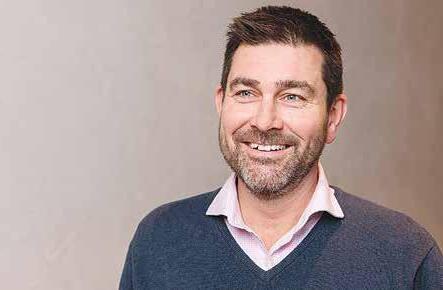
IF HIGHER PRODUCTION IS YOUR END GOAL… THEN LOOK TO THE START TO ENSURE YOU ACHIEVE IT.
Successful forage brassica and pasture production is highly dependent on the first six weeks of a plant’s life. Ultrastrike® and Superstrike® seed treatments include insecticides, fungicides and nutrients to maximise seedling establishment, helping to deliver higher yields and improved animal production.
A NEW pet food canning factory at Hornby is promising better overall returns for farmers as it taps into lucrative export markets.
Riverland Foods Limited says the plant, which was set to start production about the end of February, would produce 30 million cans of highvalue cat and dog food annually, adding significantly to an industry generating over $NZ300 million in yearly exports.
Riverland describes it as a first for New Zealand, producing exclusively for client brands.
General manager Michael Dance said it would remove a logjam that limited New Zealand as a go-to destination for third-party manufacturing.
He said other plants are either very small and running at full capacity making their own brands, or in long-term contracts for a small number of large clients.
The Riverland plant was a high speed, high volume line that is attractive to established global players.
“Previously these types of companies would not have considered sourcing from New Zealand. The impact for farmers in terms of upstream impact is a growth in demand for what might traditionally be viewed as low value or possibly waste stream product.
“So good news in terms of lifting the overall yield per kg from an animal.”
Dance said that not producing their own

brand gave Riverland a real point of difference.
“All customers are treated equally. It also provides us with flexibility to meet the changing market demands such as different product textures and formulations.”
Dance said they deal with the major meat processors for their supply but being South Island based gave greater flexibility with the raw materials.
“The most obvious example of this is our


•
•
•

ability to handle fresh meats as opposed to frozen.
This removes a costly step for meat processors and also provides us with a better quality ingredient that hasn’t suffered from severe temperature degradation,” said Dance.
“By working with industry we also believe we can add value to waste streams both on the farm and in the wider environment.”
The plant has been established by a team with broad experience in meat processing and pet food production including head of operations Tom Coughlan, who says he is looking forward to providing high-quality cat and dog food made from the best ingredients in the South Island, adding that Canterbury
• For Water Storage Tanks
•
• Minimises pump operation
•Available

is a strategic location for New Zealand’s top meat processors.
“We chose Christchurch because of its proximity to processing plants and quality raw materials.”
Dance also sees great potential in using pest animals as a meat source.
“Pest eradication is an area I am personally very interested in.
“I’d like to work with both government and industry to create a financial incentive for supply of possums, wallabies, rabbits, all of which are very useful and desirable in overseas markets.”
The company is keen to work with local research institutions such as Lincoln and Massey to develop new products and production processes.
“This is something we are well placed to do as we have our own in- house R&D facilities and pilot plant,” said Dance.
“Riverland’s ability to make many different textures gives brand owners the opportunity to hold on to their customers within their brand.”
Dance said initial investment in the project exceeds $NZ30 million but further funds are committed for future staged development.
Over 95% of the plant’s output is expected to go to export.
Pet Food Association executive director Richard Brake said the addition of world-class production capacity was very welcome.
Pet food exports have quadrupled in less than a decade, increasing from $75 million a year in 2014 to $320 million in 2023.
“Retail-ready petfood exports have been growing very strongly for some time. Growth is at 17.4% into North America and 25.3% into Asia,” said Brake.
“A recent plateau in exports was caused by production capacity constraints and most recently the effects of Cyclone Gabrielle on East Coast manufacturers, but the addition of Riverland’s factory will further boost New Zealand pet food exports.”
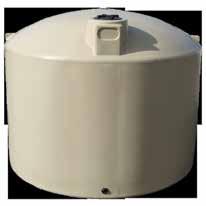

• Stainless steel bracket and Shaft
• Fits plastic and concrete tanks
• Rugged and long lasting

remove red tape and regulations that had stalled the rural economy.
RETURNING TO the
field days circuit after a break of four years due to Covid, the Southern Field Days at Waimumu, near Gore, was all about positivity – following six months of negative sentiment in New Zealand agriculture.
With visitor numbers hitting an all-time high of 45,500 over the three days, bringing the overflow carpark into play, 780 sites offered plenty of interest for the folk who experienced sunburn on day one, followed by a hefty dose of rain on day two.
While the mood was good, it was a case of mixed reports from stallholders, with the purveyors of smaller items such as silage grabs or bale feeders doing business, whereas larger capital goods were on the back burner, with companies reporting it was a little quiet, especially after 2pm – probably an indication of the move towards dairying in the region.
Indeed, chatting to a few farming families at the hotel – those either dragged out for Valentines or grabbing a post-event feed on the way home – many said chequebooks were locked away until their fortunes improved.
Day one saw the arrival of Prime Minister Christopher Luxon, alongside a number of rural MPs. He said farmers had been treated like villains for the past six years, but his Government was working hard to
“We want farmers to know they are not villains, but deeply valued individual or corporate businesses that this Government will back,” he said.
Spending time to talk to farmers, contractors, council officials and farming advocacy groups, his presence was in sharp contrast to the last visit paid by a Prime Minister; Jacinda Ardern spent an hour at Fieldays in 2020 and was roundly heckled by the crowd.
By contrast, Luxon was greeted by a huge round of applause when he noted, “NZ agriculture has been persecuted with 23 different rules or regulations over the last six years that have buried farmers in endless red tape. Our job is to remove those regulatory barriers and, if need be, replace them with smart or considered alternatives, but only after proper discussions with the affected communities”.
Asked what he would do to stimulate the rural economy, he responded by suggesting, “over the next decade, if we can grow agriculture by 2% per annum, we will end up creating $35 of billion growth in the NZ economy”.
Southern Field Days chairman, Steve Henderson, said although spending was likely to be down at this year’s event because of low commodity prices and higher interest rates, Luxon’s visit had been positive,

Read us until the cows come home!

“showing the new Government was taking agriculture seriously, although it might take a while until things start to come right”.
Prime Minister Christopher Luxon was popular among farmers at the Southern Field Days this month.
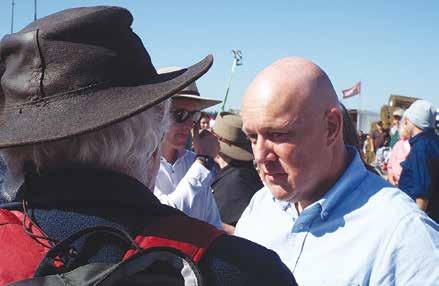


When it comes to rural healthcare in New Zealand, there is no one more tuned in than John Macaskill-Smith, CEO of Spark Health. As the major sponsor of the National Rural Health Conference 2024 and having spent 25 years working within the health sector, he has a lot to say about where rural health technology is headed and how we can get there.
“CONNECTIVITY AT a human level or digitally is critical,” says MacaskillSmith – highlighting the importance of connectiv-
ity in overcoming barriers in rural healthcare. Spark Health is working with rural providers to tackle these challenges head-on,
with the goal to enhance connectivity and integration across the healthcare ecosystem.
“Strong, resilient
▶ Top annual ryegrass in the 2023 - 2024 NFVT® All New Zealand Summary with exceptional yield across all seasons
▶ Very fast establishment with strong cool season performance
▶ Holds on well into late spring, early summer
▶ High tetraploid forage quality with excellent palatability and grazing utilisation
▶ Late heading, maintaining forage quality into late spring to maximize animal performance
▶ Ideal as a winter feed and for all livestock types
rural health is critical for the health and wellbeing of rural and regional communities in NZ,” Macaskill-Smith adds.
He acknowledges the significant pressure on the healthcare system, particularly in rural areas where challenges are compounded.
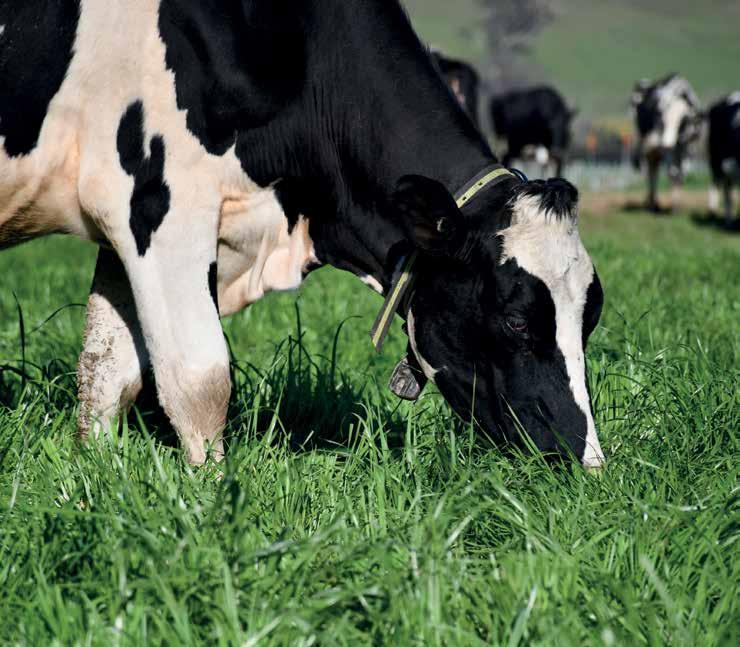
UPPER
James Bryan
LOWER NORTH ISLAND:
Matt Kidby Tel: 027 230 1783 matt.kidby@cropmark.co.nz
UPPER SOUTH ISLAND:
Liam Martin Tel: 027 555 6813
LOWER SOUTH ISLAND:
Charlotte Field Tel: 027 236 5552 charlotte.field@cropmark.co.nz

“How we manage this into the future is going to be critical,” he explains –emphasising the urgency of finding innovative solutions. He sees the National Rural Health Conference as an opportunity to connect, share ideas, and explore possibilities for improving rural healthcare.
One of the primary challenges, MacaskillSmith notes, is the difficulty in pausing and reflecting on “what’s possible” to address challenges differently.
“Spark Health has reset its focus and is looking to work alongside the clinical frontline, particularly in the community, to help support and develop new approaches,” he explains.
Macaskill-Smith points out that health goes beyond just medical interactions and that rural areas face unique challenges in this regard. He says Spark Health is actively seeking to work with communities and frontline providers to better understand and address the challenges rural communities face.
The past five years have impacted how Spark Health views the digital space, placing importance on the strength of our communities’ networks in extreme weather events and how we configure our working and living spaces from a digital perspective.
“Mobile, broadband, and system connectivity is a challenge in many areas, but technology advancements and services are enabling us to reduce or remove the barriers,” Macaskill-Smith says.
As for Spark Health’s collaborations with
rural health providers, Macaskill-Smith explains that the organisation is actively working to help reduce digital inequity between community care and hospital care.
“We are also looking to support the spring boarding of digital health through supporting innovation and research from the frontline to broader research,” he adds. From introducing digital platforms to supporting the full breadth of homecare support, and more advance point of care testing, Spark Health is continuously developing solutions to improve connectivity and integration across the entire healthcare system.
Looking ahead, Macaskill-Smith foresees several emerging trends in the integration of digital health and technology in rural healthcare. These include automation, streamlined workflows, patient insights, and advancements in connectivity such as 5G and satellite technology. However, amidst these technological advancements, he stresses the importance of retaining the human element of healthcare.
“With what we can now connect and combine in incredibly portable and powerful devices alongside artificial intelligence and enhanced software, we are wellpositioned to retain and strengthen a new type of rural health,” he remarks.
The biggest question Macaskill-Smith sees for technology in rural healthcare is how we can bridge the gap between opportunity and providing care today.
Register now at www. nationalruralhealthconference.org.nz/register
SHEEP FARMERS, facing low farmgate prices, are being urged to attend a national woolshed roadshow announced by the Government.
Beef + Lamb NZ chair Kate Acland says sheep and beef farmers are facing significant financial headwinds and concerns about impending regulations coming into force are adding to an already heavy burden.
“There’s a lot to work through in a short amount of time on the various environmental rules and regulations,” says Acland.
“We’ve encouraged ministers to get out and get face to face with farmers, so it’s great to see this initiative. It will give Ministers direct input from farmers them-
selves early in the process to ensure changes are sensible and work for farmers on the ground.
“This will also be a great opportunity for farmers to hear about the work they’ll be doing to create greater opportunities for exports and opening new markets like

India.”
To mark National Lamb Day on February 15, Agriculture Minister Todd McClay hosted bipartisan celebrations of National Lamb Day with industry representatives at Parliament this week to mark the anniversary of the first frozen lamb
exports in 1882.
McClay congratulated sheep farmers on the high-quality products they continue to produce. He also acknowledged the financial pressures sheep farmers.
“The Government is focused on getting costs down for our farmers.

back our farmers who produce high-quality products that are sought globally.
“The Government recognises the red meat sector’s enduring resilience as an industry that has consistently contributed to New Zealand’s exporting portfolio, and understand we have an obligation to make sure we are not imposing any unnecessary costs on farmers.”
We recognise the challenges sheep farmers are facing in the current climate with the oversupply of Australian lamb flooding the market and driving global prices down; and the ongoing barriers faced across the wool sector,” McClay says.
“At the same time, we
Work to reduce the previous government’s regulatory burden on farmers has already started. The Government announced that over the next three months McClay will be joined by Otago sheep farmer Mark Patterson, in his role as Minister for Rural Communities and delegation as Associate Minister responsible for wool on a
national woolshed roadshow.
“Sheep farmers have long been the backbone of New Zealand’s farming communities. Under my delegation as Minister responsible for wool I will be working with farmers to rebuild the industry into a strong sector that recognises the exporting and sustainability potential of the product, Patterson says.
“We will be engaging with small catchment groups from Northland to Southland meeting farmers in the woolsheds, and at the farm gate, to discuss grassroots solutions.
“Sheep farmers continue to make an invaluable contribution to our primary sector and this government is committed to celebrating and supporting that,” McClay added.

TO ENSURE beef and sheep farmers get more than heart-warming platitudes out of the new Government, they’ll need to hold their feet to the fire whenever they get the chance.
The national woolshed roadshow announced by the Government is a good opportunity to do this. Beef + Lamb NZ chair Kate Acland says sheep and beef farmers face significant financial headwinds and concerns about impending regulations are adding to an already heavy burden.
“We’ve encouraged ministers to get out and get face to face with farmers, so it’s great to see this initiative. It will give ministers direct input from farmers themselves early in the process to ensure changes are sensible and work for farmers on the ground.”
The Government has shown good intent and a willingness to engage, which has been missing in recent years. To mark National Lamb Day, Agriculture Minister McClay hosted bipartisan celebrations of National Lamb Day with industry representatives at Parliament. McClay congratulated sheep farmers on their high-quality products and acknowledged the financial pressures they face.
He also said they’re focused on getting costs down for farmers.
But farmers are going to need more than words. Acland points out the B+LNZ’s economic service analysis shows that sheep farmers are facing their lowest year of profitability in 15 years. And on-farm inflation was 16.3% last year and 10% year before that.
McClay will be joined by Otago sheep farmer Mark Patterson, in his role as Minister for Rural Communities and delegation as Associate Minister responsible for wool on the woolshed roadshow. Patterson says he will work with farmers to rebuild the industry into “a strong sector”.
The new Government has also promised to dismantle legislation that impacts the agriculture sector, including legislation around the contentious emissions targets and pricing.
Sounds good in theory. A few hard followup questions are in order though – about the what, when and how – and hopefully they will be asked at the roadshow (dates & locations still to be announced).

“My socks could be worth a fortune!”
YOUR OLD mate can’t believe the absolute brass neck of the directors at Beef+Lamb NZ who are asking levypayers for a hefty increase in directors fees at the time of record low red meat prices. You’d think B+LNZ might have learnt its lesson about getting offside with levypayers around its support for the disastrous He Waka Eke Noa process, which eventually led to the demise of previous chair Andrew Morrison. However, it seems B+LNZ directors don’t care how the optics of a fee increase look to struggling red meat farmers. According to papers sent out for B+LNZ’s annual meeting next month, the board is recommending the total director fees pool lift by $73,500 from $401,500 to $475,000 per annum. This would see chair Kate Acland’s payment rise from $76,220 to $90,000, while each director will see their annual stipend jump from $38,110 to $45,000.

THE HOUND reckons if farmers in this country think they’ve got a problem with the small-minded, officious bureaucrats imposing unworkable rules with little or no understanding of agricultural realities – it could be worse. In France, many of that country’s arable farmers use the River Seine to transport grain by barge. However, the organisers of this year’s summer Olympic games want to use the river for water sports and therefore have made a request that farmers “delay their harvest” this year. Now while some people may think that farmers are God, not even they can suspend the natural process of when a crop is ready to harvest! It seems that bureaucratic stupidity is an international disease and when it comes to regulations and farming.
PRODUCTION: Dave Ferguson Ph 027 272 5372 davef@ruralnews.co.nz
TO ALL FARMERS, FOR ALL FARMERS
HEAD OFFICE POSTAL ADDRESS:
PO Box 331100, Takapuna, Auckland 0740
Phone 09-307 0399
PUBLISHER:
Brian Hight Ph 09 307 0399
GENERAL MANAGER:
Adam Fricker Ph 021-842 226
CONSULTING EDITOR:
David Anderson Ph 09 307 0399 davida@ruralnews.co.nz
Becky Williams Ph 021 100 4381 beckyw@ruralnews.co.nz
REPORTERS:
Sudesh Kissun Ph 021 963 177 sudeshk@ruralnews.co.nz
Peter Burke Ph 021 224 2184 peterb@ruralnews.co.nz
MACHINERY EDITOR:
Mark Daniel Ph 021 906 723 markd@ruralnews.co.nz
THIS OLD mutt suggests the ‘don’t come Monday’ (DCM) award (in other words, resign) must go to the heartless, mean-spirited minions at Hastings City Council for even proposing that the poor people whose houses were wrecked by Cyclone Gabrielle should help pay the council for the demolition of their houses. The council is claiming that some people have already received insurance payouts to cover this. A paper to the council says it is unfair to ask other ratepayers to pay for the houses that are no longer habitable.
House owners are rightly furious about this idiotic proposal which only rubs salt in the wounds of people who have undergone huge suffering at the hands of Gabrielle.
To make matters worse, this proposal has come almost to the day when the cyclone struck.
AUCKLAND SALES REPRESENTATIVE:
Pollard Ph 021 963 166 stephenp@ruralnews.co.nz
WAIKATO SALES REPRESENTATIVE: Lisa Wise Ph 027 369 9218 lisaw@ruralnews.co.nz
PRINTED BY INKWISE
DISTRIBUTED BY REACHMEDIA
YOUR CANINE crusader reckons no single lobby group has had a bigger turnaround in fortunes than Federated Farmers since the election of the new coalition Government. Under the old regime, Feds were so badly treated they were even left out of a number of consultations affecting the farming sector by the Labour government. Now it seems everywhere you look in Parliament there is a Feds’ influence. This includes the two new associate ag ministers, Andrew Hoggard and Mark Patterson, as well as MPs primary production select committee deputy chair Miles Anderson, and new MPs Mike Butterick from Wairarapa and Grant MacCallum from Northland – all former Fed Farmers office holders. There are also quite a few parliamentary staffers who were former Feds staff. Talk about going from the outhouse to the big house.
WELLINGTON SALES REPRESENTATIVE:
Ron Mackay Ph 021 453 914 ronm@ruralnews.co.nz
SOUTH ISLAND SALES REPRESENTATIVE:
Kaye Sutherland Ph 021 221 1994 kayes@ruralnews.co.nz
DIGITAL STRATEGIST: Jessica Marshall Ph 021 0232 6446


AS I sit at my keyboard today, I trust all is well with you. In our part of this great little country we live in, we have been enjoying something of a wet summer. We had a major flood over the last weekend of January.
February 4th we were on the road driving into town; it was a beautiful clear but somewhat chilly summer morning. Coming over the hill we caught a stunning panoramic view of the three National Park mountains.
To our surprise, both Ruapehu and Ngauruhoe were covered in snow. It was well down too, not just a light sprinkling here and there. Oh, for a camera, I thought to myself. Yep, I’ve got to admit, I wanted to capture for the record this rather graphic example of global warming!
I have been following with interest all the farmers’ protests happening in Europe the last few weeks. What began in the Netherlands has now spilled over into several other European nations. Local farmers and food producers have come together en masse, in numbers not seen before. They have been standing up against their governments’ attempts to ram the madness of extreme green agendas down their throats. It really has been a vivid example of the influence ‘we the people’ can have if we come together and stand in unity together.
In pursuing some unbiased news about it all, I actually got to see a very interesting interview with one spokesman from the Dutch farmers group. He mentioned how they were limited to planting certain crops at certain times, all dictated to them by their own government. Of course, behind the scenes, it was the EU heavies calling the shots.
Now, here’s the bit that really surprised me. Their government had their own farmers under satellite surveillance, to keep them in line. That’s right! He said they were getting checked every

Colin Miller
three days by satellite surveillance. Wow, how extreme is that?!
I think it was the inter viewer who raised the point; even the drug traf fickers don’t get anything like that kind of close-up, rigid surveillance. Imme diately I thought, well, the child traffickers certainly don’t face that either.
Nope, it’s the local farm ers – their food producers – who are the “enemies of the state” here.
Their spokesman also mentioned how they had all quickly been labelled as ‘far-right extremists’ by those in power. Sadly, that’s a typical response from those in power, in these deceptive days we’re living in.
He clearly stated it wasn’t politics or hardline political bias for them, but rather their farms and their very livelihoods that were at stake. And some of those farms had been with the same families for generations.
These very farmers are all food producers, which begs the question: why is that no longer important?
This stuff is not science, but rather an ideology that’s getting mandated more and more by the privileged few who hold the reins of power.
And the extremists’ accu sations, you ask? To me it is obvious who the extremists are in all of this – and it’s certainly not the farmers!
Yep, we are surely living in deceptive times. I continue to be amazed at the phone and internet scams that just keep on coming. And people still fall for them!
Right here is yet another time when having good friends is so critical. They just may know something I don’t.
me with an active faith, greater wisdom than our own is readily available.
To contact Colin: farmerschaplain@ruralnews. co.nz


And yes, for those like
THE LINCOLN University Dairy Farm (LUDF) is rethinking its approach to plantain, in the face of continued difficulty in realising its expected benefits.
For some years now, the herb has been touted as a powerful means of reducing nitrogen leaching from dairy farms, but Lincoln University researcher Racheal Bryant told attendees at the farm’s recent February Focus Day that LUDF had struggled with plantain, especially in weed control and pasture establishment.
“From an environmental point of view there’s a lot of evidence to demonstrate that that it can have benefits, but if it’s not implemented in the way that it’s been tested and the evidence pro-
vided, then we don’t believe we’re getting the benefits here at LUDF.”
Bryant said they don’t want to “pollution swap” by mitigating nitrogen at the expense of worsening greenhouse gas emissions.
Nor did they want to reduce efficiency and profitability, if plantain meant less feed produced and harvested.
“We’re reviewing the effect of plantain on meeting the targets.
“How much is it costing us? Is it impacting positively on our profitability benchmarks and our environmental benchmarks?
“We are reviewing all of those and then essentially looking at how we can make it work out.”
Bryant’s presentation took place in a paddock which she said had been established as a pure

plantain sward but was now back in grass with very few plantain plants in evidence.
“The number of grazings we were able to get out of the pure sward of plantain was less compared to the rest of the farm so that was putting pressure on other pad-
docks because we weren’t getting the grazing days from the plantain.
“The long - from six weeks to 12 weeksestablishment meant that soil was in a fallow state for a lot longer period, so that can impact our calving.”
She said that at LUDF
plantain was not shown to yield as well as for perennial ryegrass/white clover mixes.
“So, we’ve just got to follow the science. We would be looking at accepting production losses if we can make some big environmental gains.”
CROWN RESEARCH institute
AgResearch has received close to $13 million in government funding to help advance opportunities for New Zealand in both plant-based food ingredient and cell-based protein markets.
Nearly $12m has been committed over five years to a programme looking into improvements in plantbased foods.
It will also be used to research how a plant-based foods industry could operate in New Zealand using crops known to grow well locally, like green peas, oats and hemp.
AgResearch senior scientist Alistair Carr says arable crops already
provide most of the calories in people’s diets and have good sustainability and animal welfare credentials. He adds that food manufacturers have come out with many novel plantbased products.
“However, these are often highly refined and stripped of their wholefood benefits and can have hidden damage to essential amino acids. The next generation of plant-based foods will need to be prepared more sensibly with gentler handling of the inherently healthy raw materials and better guardianship of environmental impact.”
Carr says AgResearch has gathered some of the brightest minds in pro-
cess engineering, food science, sustainability evaluation, economic analysis and human nutrition. He says the goal is to support NZ’s arable crop processors, as well as entrepreneurs in the emerging proteins sector to make New Zealand a premier supplier of high value plant-based food ingredients.
“New Zealand can participate in this opportunity by developing the science and technologies to produce unique highly functional plant foods.”
Meanwhile, the second programme – with just under $1m in funding over three years, will focus on the use of technologies to advance NZ’s cell-based protein industries.
Bryant said LUDF would stick with plantain but would look at comparing establishment methods of broadcasting and direct-drilling in spring and autumn.
When first adopted, 30% plantain swards was what the science suggested but now she did not think they could make that work, and would aim for 10 to 15%.
However, Bryant said a lot of the monitor farms taking part in the big Plantain Potency Project (led by DairyNZ with MPI, PGG Wrightson Seeds, and Fonterra) were having a lot of success.
“They’re not having as many difficulties as LUDF is having. We’ve got to diagnose what some of the issues are that’s causing the problems at LUDF but certainly this is one sample
For example, meat that may be grown from animal cells.
AgResearch science team leader Gale Brightwell says that while it is an exciting time for cellular agriculture, there are still major challenges to overcome.
“The biggest barriers are the cost of large-scale manufacture including the use of food-grade growth media (substances in which the cells can be grown), loss of cell lines due to biological contamination and high requirements for food safety testing.”
She adds that, to date, no largescale cost-effective technology is available to maintain sterility for cellbased protein manufacture nor an
size as far as how plantain is performing in the wider community.
“This is an exception, not the rule, I believe.”
Her colleague, Senior Lecturer Omar Marashdeh, told the focus day that plantain was an attractive option for nitrate reduction because it required no major changes in the farm system, nor significant capital investment or infrastructure.
He said plantain works by four modes; two above-ground in-animal effects, being dilution through higher frequency and volume of urination, and a partitioning effect in the gut that puts more nitrogen into faeces and milk; and two in-soil effects of the plant roots that both slow nitrification.
online monitoring system to detect changes in quality and safety.
This will be where the research comes in, drawing on cold plasma, hyperspectral imaging and machine learning technologies to help ensure sterility is maintained and any contamination is rapidly detected and responded to in the production process.
“The research will result in the development of new knowledge, IP, and technologies that can significantly enhance the sustainability, safety, and ethical appeal of emerging NZ cellular agricultural companies,” Brightwell explains.
– Leo Argent

AROUND 5% of ewes in New Zealand will have problems with their udders (udder defects).
These can lead to reduced lamb survival and growth rates. It’s a good idea to check udders 4-6 weeks after weaning so that affected ewes can be identified and culled.
Studies on lower North Island farms have shown that 2-7% (average around 5%) of mixedage ewes have udder defects. The lambs that are born to ewes with udder defects will have a reduced chance of survival – their death rate is 3-4 times higher compared with lambs whose dams had a normal udder. Lambs that do survive grow an average of 25g less per day so their average weaning weight is around 2kg.
Because of these

effects, ewes with udder defects will wean around 11 less kg of lamb compared with ewes with
normal udders. The generalised hardness of the udder is often called mastitis. If the infection is
recent the udder will be hot and swollen. More commonly, the infection has been there for some
time and the udder half or halves will simply feel very hard all over.
If the affected udder
MANY FARMERS check ewes’ udders at weaning or shortly thereafter.
However, many ewes with apparently normal udders at weaning are found to have udder defects 4-6 weeks later. This is probably due to post-weaning mastitis and possibly also because it is easier to feel some defects once the udder has dried-off.
In research studies it has been found that checking ewe udders a few weeks prior to mating (rather than at weaning) is a better predictor of how udders will affect lamb survival and growth for the coming season.
It is therefore recommended to check udders 4-6 weeks after weaning in order to find the maximum number of affected ewes but still have time to finalise ewe numbers before mating.
– Source: Beef+Lamb NZ
half is ‘milked’ by gently squeezing the teat, in recent infections the secretion might be watery, bloody or clotted. However, if the udder has been infected for some time the secretion may be very thick and discoloured or there may be no secretion at all.
Note that just after weaning the udder is often quite firm as it is full of milk, however an udder half with generalised hardness will be very firm/hard. Ewes with generalised hardness / mastitis in one or both udder halves should be culled.
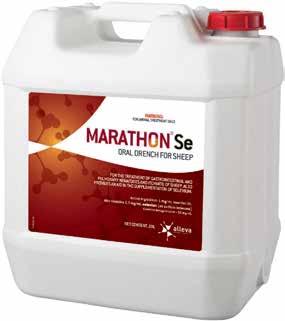

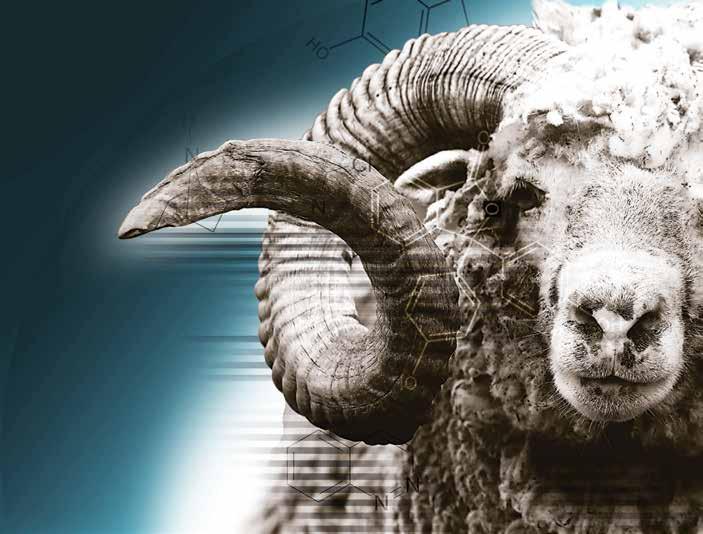


THE BIGGEST agricultural expo in the lower North Island, Central Districts Field Days, gets underway on March 14 and organisers are promising a great event.
Agriculture is at the heart of the region and the town of Feilding is seen as one of the most important agricultural hubs in the country. There is a wide range of farming and commercial growing enterprises serviced by the town which has a very large saleyard.
It is also the base for a whole range of companies that service the agri sector: banks, agricultural consultants, transport and contracting companies, veterinarians and a host of businesses selling a wide range of farm equipment.
Up to 500 exhibitors are expected to attend the three-day event –mainly local but also many from other parts of the country. While there is no actual theme for the event, the focus is very much on sustainability and innovation, as well as the usual exhibits and special activities for families. In essence there is something for everyone – farmers, families

tors to the field days can see demonstration of this equipment. To the farmer or grower such innovation is seen as one way of coping with labour shortages.
Another important feature of the field days is the showcasing of career opportunities in the agricultural sector. Many of the exhibitors will highlight career opportunities and there will be handson options also available.
The Young Farmers organisation will be among those present.
This year organisers say
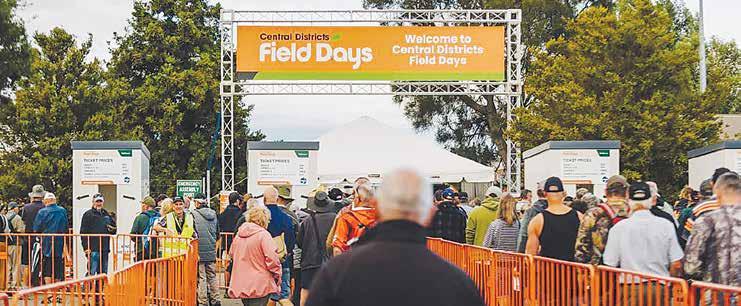
and townsfolk who are keen to see what’s new in the rural sector. For those looking for a new tractor or car or farm implement there will a range of
sites available to compare products. The organisers say they have a special cuisine pavilion which will feature local produce.
For those interested in
technology, the AeroLab site offers a chance to see a whole range of automation which is now available to farmers.
This includes drones
which can perform a variety of tasks and make light work of some challenging situations. Also, autonomous tractors and carts will feature and visi-
there will be a new kids’ zone to keep the children amused while the adults focus on some of the serious exhibits. The kids’ zone will feature an

inflatable bouncy castle ad a corn maze as well as other activities.
The RNZAF, based just a few kilometres away, will have a helicopter on site and children will have the chance to look over this machine and maybe think about a career in the military.
But for the organisers, one of the key features of CD Field Days is the fact that people who may not see each other a lot during the year can connect. It is both a social and business event.
Last year the event was held just after Cyclone Gabrielle that caused devastation along the east coast of the North Island. This year the organisers are hoping that more people will come over the hills to Feilding and take some time to relax and feel positive.
While the agri sector is facing some major challenges now, events like CD Field Days can shift a sometime negative mood into a positive one as people come face to face with a whole lot of positive solutions and innovations. CD 2024 promises to be another great event and an occasion to showcase all the positive things about NZ’s primary sector.
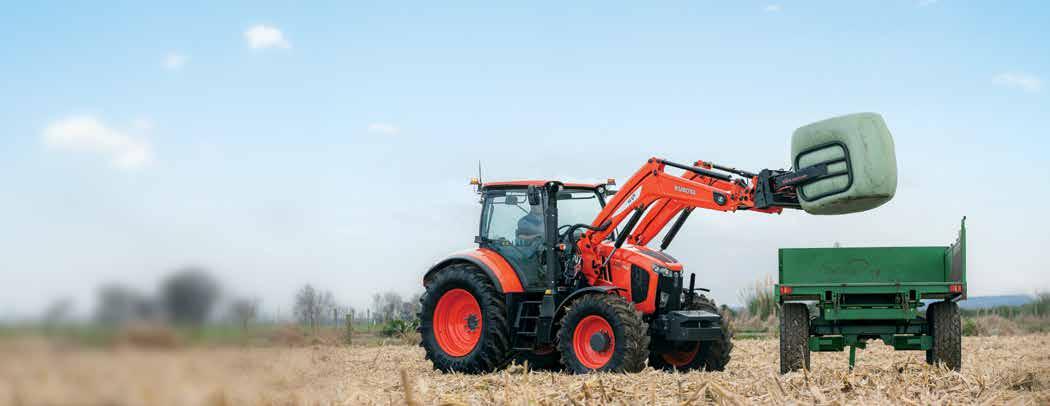

KIA ORA and a warm welcome to everyone making a living off the land, contributing to our regional and national well-being. For regulars who make Field Days, a ‘must attend’, it’s welcome back!
Central District Field Days, with its March harvest-time associations, is a pivotal event on the national farming calendar, and a big event for us here, that we share with neighbours Manawatu District Council.
At the hub of our widely diverse agricultural region, Palmerston North City has become a major centre for agricultural production, servicing, processing, marketing, distribution, exporting, research, education and training.
Establishing ourselves as the nation’s ‘food and fibre capital’, Palmerston North and the Manawatu’s extensive agricultural reputation has been based on endeavours and initiatives carried on by successive generations of individuals, organisations, institutes and companies.
These laurels may be hard won, but they are not achievements we can rest on – especially in the highly charged, globally uncertain, highcost and high compliance environment we find ourselves in.
Doing what we’ve always done is not going to get us as a region any cut-through. That’s why we have developed a Regional Food Strategy, showing our broad ecosystem in the national food supply chain. Home to 3100 food scientists, three CRI’s, FoodHQ and the National Food Science Centre at Massey University all strengthen our claim as New Zealand’s ‘Food Innovation City’.
Now, while there are growing international markets for New Zealand’s agricultural products, we still need to find new ways of leveraging these prospects.
So, in the past 12 months since the last Field Days, Palmerston North has been proactively courting its international connections with the aim of growing trade, technology and research opportunities –especially in foodtech and agritech.
This included a visit last year to Wageningen –a city in the Netherlands famous for its foodtech research – accompanied by representatives of Massey University and the Department of Trade and Enterprise, to explore reciprocal research, trade and academic options.
Last October, the city hosted the NZ Institute of International Affairs’ Mapping Trade Horizons Forum with former Trade Minister Tim Groser and UK High Commissioner Iona Thomas. This looked at how the new NZ-UK Trade Agreement could benefit our producers and manufacturers.
Early this year I headed a city delegation to China where among other things, we enjoyed positive engagements with the East China branch of the renowned Chinese Academy of Agricultural Sciences (CAAS) along with several commercial food and tech companies.
One aim of the trip was to attract a Chinese delegation from the city of Kunshan on the Yangtze River Delta to attend the fifth E Tipu BOMA New Zealand Agri Summit taking place this June in Palmerston North.
Held for the first time outside Christchurch, the agrifood summit’s purpose is to explore ways of redefining and reshaping this country’s primary industries. So, this year we have the exciting prospect of a Chinese Kunshan city delegation also signing a Memorandum of Understanding for collaboration with Palmerston North’s foodtech and agritech sectors.
It’s vitally important for us as a small city down near the bottom
of the world to have an international perspective on behalf of local businesses and companies that are already exporting.
However, while our current international trade networks may now
involve a range of other commodities, we certainly haven’t forgotten it was our primary producers who gained us that essential ‘first foot in the door’.
Kia kaha Grant Smith, Palmerston North Mayor
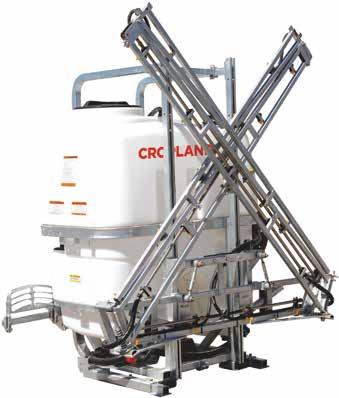
THEY CAME from all around the country to Horowhenua recently to showcase farming in the early days.
For two days crowds of locals turned out to this unique display of history in action with a huge range of tractors and other implements from the past which were used to till the land and harvest the hay and other crops.
Those taking part were mainly members of vintage machinery clubs who dedicate their spare time, some would say full time, to restoring old farm tractors and farm implements and getting them back into working order. Some have sheds full of tractors and implements while others have



“The oldest tractor is a 1925 FarmallDeering 10-20, the smallest is Farmall Cub, the biggest is a TD 24 bulldozer and the newest 1954 Farmall Super C.”
and another property all his life. They run a mixed cropping and a small dairy farm and generously gave up a large slice of their land so that the event could be staged there. Because of Covid, Graham Cottle says it’s five years since they held this event in Horowhenua.
“The event is very

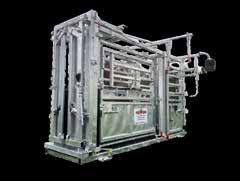




show on the day. Cottle says his hobby has the full support of his wife Susan.
“The oldest tractor is a 1925 Farmall-Deering 10-20, the smallest is Farmall Cub, the biggest is a TD 24 bulldozer and the newest 1954 Farmall Super C,” he says.
Like most of the collectors of tractors, Cottle focuses on a special category. He has gone for the international Harvester – McCormick range and prefers older tractors to the newer ones.
During the day there was a parade of some of the tractors with Rod Clifton local restorer/
mechanic and major collector of all types providing a very detailed commentary of the types on show. He also stopped the parade every now and again to get the drivers of their machines to explain the history and significance of their tractor.
A very special exhibitor on the day was 98-year old Carl Lutz who featured in the previous edition of Rural News. For Carl, age is not a barrier and he’s still restoring tractors and implements and was happy to talk to visitors about his own collection.
Stephan Muggeridge provided one of the highlights of the day with his ploughing demonstration. On the first day of the event, it rained making ploughing difficult, but the organisers cut crop down to make it easier for Stephan to get his team into action.


Before restoration...
A MACHINE that attracted much attention was Mike Playfords McCormick-Deering grain binder which he has lovingly restored. Mike who hails from Masterton in the Wairarapa says the machine dates to the 1920’s and says it took him nine months to restore it and it now works beautifully.
“The ones you normally see are those sitting on the side of a field and you can’t see them working. I saw a video from Canada where it showed a machine like this restored so I decided to do the same with this machine which was just a wreck when I first found it,” he says. Playford is a regular exhibitor at events like this and says he gets lot of people coming up to him, but says sadly today, many young people aren’t interested in the past.
... and after restoration


PETER BURKE peterb@ruralnews.co.nz
dairy farm at Kiwitea in the Manawatu, but when Parliament is sitting he still gets up at 5am and checks the messages that
dairy shed at his property. While he’s based in Wellington for much of the week as the Associate Minister for Agri-


Heiniger capital equipment, is trusted by New Zealand farmers, contractors and shearers to get the job done safely and efficiently.
Because we care about your safetywhile working.

With industry leading safety features, the #1 selling and most trusted woolpress helps to keep you and your workers safe in the shed. The TPW Xpress now comes with the new indicator with audible and visible alarms that let you know when you’re approaching the target weight.
Watch our equipment in action!


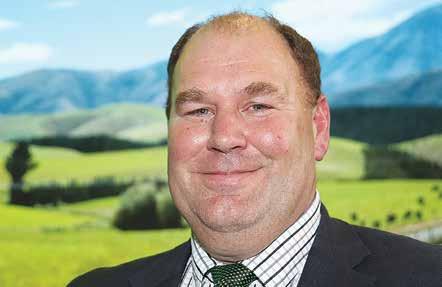
quirks such as when Parliament is sitting, you can’t leave the precincts of the buildings until 10pm when the normal day concludes,” he says.
When Parliament is sitting, Hoggard is in Wellington from Monday to Thursday and usually starts work at around 7.30am. Monday, which is not a sitting day is a day for him to catch up on a lot of matters and attend meetings.






The world’s leading shearers trust the #1 selling shearing plant in the world, winner of multiple WorkSafe awards. The Evo delivers industry leading safety features, impressive performance and superb reliability
Industry professionals trust the versatile, compact and cost effective TPW Backease Hoist to safely lift loads of up to 600kg with extendable 1.2 - 1.8m boom. At only 78kg, it’s easy to install with no loss of load space and features hydraulic lift and pressure regulated downwards movement




much in touch with what’s going on in heartland NZ and in particular on his family farm. He employs two herd managers and two staff for the day-to-day work while his wife Audra, in his words, “oversees everything”.
“While I have put a lot of what’s needed to be done down in writ-
ing, some of the information is still in my head, so I get the occasional call asking what switch to turn on,” he says.
The transition from farmer and farming leader to politician has not been too hard, says Hoggard. He says his years at Federated Farmers, including a stint as
AS ASSOCIATE Minister for Agriculture, and the Environment, Andrew Hoggard has a number of delegations to focus on.
The most immediate one is dealing with problems relating to SNA’s or significant natural areas –stopping the mapping of new ones and dealing with existing ones. This is in the 100-day plan.
Another matter he’s been tasked with dealing is animal welfare and with that comes the controversial issue of the export of live animals. Hoggard says he will also have to deal with animal welfare codes coming his way from the National Animal Welfare Advisory Committee (NAWAC). Food safety is another of his delegations.
president, means he was aware of some of the protocols and issues that awaited him as a politician. But he adds that understanding all the machinations and rules is something he is still a novice at and he’s busy reading a very big book which explains all this.
“There are some little
Of major interest will be what happens regarding changes on environmental matters.
“Farm plans is something I will be putting in quite a bit of effort to this year and I’ll also look at water storage – another big issue for farmers,” he says.
Hoggard says the key thing is making the plans simple so that farmers can do these themselves and not have to employ a $10,000 consultant. He says it seems the consenting process has got out of hand with a plethora of consents required, whereas rolling many of these into one consent would be less costly and just as effective.
Hoggard says while some ideas about improving the environment
While many people have his phone number from his days at Feds, Hoggard says no-one has abused this privilege and pestered him. He says he still welcomes having a dialogue with people but says they must realise that he can’t necessarily give them everything they want.
@rural_news
facebook.com/ruralnews
may be desirable, the way they have been presented to farmers has been poor. He adds that the connection between Wellington and farmers has been lost. He says there is a need to rebuild that relationship and for Wellington to come up with better outcomes that are practical and inexpensive. “I’d like to see less money spent on paperwork and instead [see] that money invested that back to farmers to help them form of better practices,” he says.
Hoggard says dealing effectively and efficiently with environmental issues would take some of the pressure off farmers – especially sheep and beef farmers – who are going through some hard times with lower returns and high on-farm costs.






PETER BURKE peterb@ruralnews.co.nz
MASSEY UNIVERSITY
remains committed to educating New Zealand’s future primary industry leaders.
That’s the view of Professor Paul Kenyon, head of the school of agriculture and environment, who says undergraduate programmes across several disciplines are about to get underway for 2024 at the university.
But he says it’s not too late for new and returning students to enrol and the School of Agriculture and Environment at Massey offers a number of programmes. He says these include the traditional programmes of the Bachelor of Agricultural Science, Bachelor of Horticultural Science, Bachelor of Agribusiness and

Bachelor of Animal Science and the strongly aligned Bachelor of Sci-

ence programmes with majors in Environmental Science, Earth Science


and Plant Science.
“Programmes and individual courses can be enrolled in internally, based on the Manawatu campus or via distance. Increasingly, Massey University is finding more students are enrolled part time or full time via the distance/online teaching modes, allowing the students to stay in their home region while working,” he says.
Kenyon says for many students, this is a great balance between gaining a tertiary education while being employed. He and his team are continually being contacted by industry looking for graduates

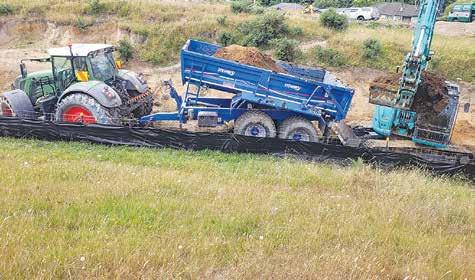


to employ, into well paid positions.
Keynon says during the last 18 months the teaching team at Massey have been working closely with high school teachers to co-develop teaching resources for NCEA, which not only helps students understand concepts but also allows for an easier transition to tertiary education or directly into the workforce.
“Working with individual high school teachers and the Horticulture and Agriculture Teachers Association (HATA) has been positive for both groups. It has allowed
his team to create new educational material that teachers need and can use, based on the new science that Massey is undertaking,” he says.
Kenyon says that the HATA teachers are passionate about providing an educational experience that helps encourage young people into the primary industries, and the teacher insights help ensure Massey staff are focusing on what is important.
He says there has also been interaction with teachers and students through in-school visits and hosting visits to Massey, which he says is
committed to providing pathways for high school students into tertiary education.
“One way it does this, is through its more than $600,000 in scholarships it hands out each year, which can be found on its website,” he says.
Kenyon says university education should be led by research. He says Massey has several large industry-aligned research programmes underway that not only provide the cutting-edge education that students and industry need, but also allows students to get involved.
He says the research at Massey aims to increase productivity and profitability of our primary industries, in a environmentally sustainable and animal friendly manner.
According to Kenyon, with appropriate research, these are all achievable and Massey is showing that this can be the case. An example of this is the Plantain Potency and Practice programme which aims to develop management strategies and demonstrate how plantain can be successfully integrated into farm systems. Kenyon says results from Massey have shown that plantain pastures can significantly reduce nitrate leaching and also reduce nitrous oxide emissions, while maintaining pasture and milk production.

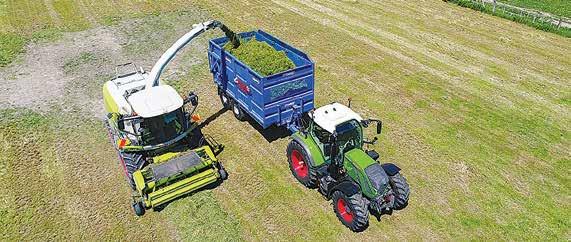

AS A farmer myself, I believe there is nothing more valuable than the resources of our land and those who work it.
On the brightest of days when there has been enough rain, enough sun, high enough payouts, and low enough interest rates, it can be the most rewarding of careers and yet like all things, the cycle fluctuates and some days it feels harder and more challenging than others. Yet, as farmers we know that just as the seasons change, so does the industry and once again the wave will right itself if we show the perseverance to ride it.
As an industry, the primary sector is the backbone to the New Zealand
economy, and this is true for the Manawatū District. Our district is fortunate to have a large spectrum of agricultural contributors with dairy production being the largest primary sector contributor to our local economy.
With vast, rugged and productive land, agribusiness is fluent in both rural and urban areas. Feilding boasts the largest stock saleyards in the Southern Hemisphere, situated in the town centre. These saleyards attract buyers and sellers from around NZ on a biweekly basis and are a key contributor to our local retail, hospitality and professional business community.
Feilding is also the district hub for agricultural
METSERVICE METEOROLOGIST James Millward says the country’s weather patterns are now on a much more even footing.
He says that will give farmers more certainty as to where they are and where they are going. Millward told Rural News that up until now, the weather has been going through something of a transitional period and the full effect of the El Nino weather pattern is likely to kick in during the coming weeks. He says this will bring some higher pressures across the North Island, resulting in prolonged dry summer weather.
Millwards adds, the good news for farmers is that conditions will be more typical, unlike last year’s weird, wet weather. He says, at present, the North Island is drying out and in terms of soil moisture the country is not far away from where it would normally be.
He says the exception is southern Wairarapa, which is particularly dry. But he adds that the expected early dry has not eventuated, with rain falling in Tairāwhiti and Hawke’s Bay and the possibility of further rains depending on what might happen with weather systems in the tropics.
“The weather could be a bit of mixed bag in the next few weeks but soon we’ll move into the normal El Nino pattern.”
Millward adds that while it’s dried out in Canterbury, the region has benefited from some of the rain that came over the ranges from the heavy downpours on the West Coast. He says some of this got into the Mackenzie Basin, which was very dry. Other dry areas are Kaikoura and Marlborough.
“Overall, it’s a drier outlook for the South Island.”
“There is risk that droughts could set in though autumn, but at the moment we are sitting pretty well right across the country in terms of soil moistures,” he explains. “So, for farmers it’s probably not so stressful as it has been.” – Peter Burke
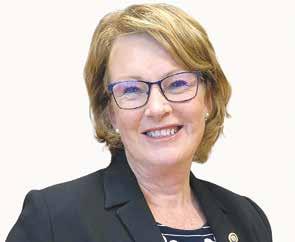
businesses hosting depots and regional offices for many. These businesses employ reps from across the district while supporting our local economy in much the same way as the saleyards.
The development in technology continues to progress and so must our primary sector here in the Manawatū District. The
CD Field Days hosted at Manfield in March is a much-anticipated celebration of the industry and helps to showcase new inventions and old farm favourites.
The event unites rural and urban residents while endorsing the importance of the primary sector throughout the district.
It’s a time for farming families to take a break
from the farm, to reconnect to others in the industry and for urban residents, a chance to see firsthand and appreciate just how important the primary sector is within the Manawatū District.
It’s an industry that is becoming more respected and certainly one that New Zealand and the Manawatū District wouldn’t manage without.





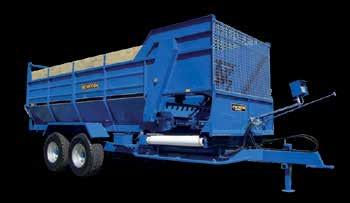


A RECENT Plant & Food Research study comparing the DNA of trees commonly called manuka in New Zealand and Australia has found such significant genetic differences between the two that the researchers are now recommending the two plants be designated as different species.
With research funding from Te Pitau Ltd, the operating arm of the Mānuka Charitable Trust, Plant & Food Research and the Department of Conservation, mānuka samples were collected in Tasmania and in New Zealand with permission from Māori landowners.
Analysing 2000 variable DNA markers called ‘SNiPs’ (single DNA letter changes) in the DNA from each plant from
both New Zealand and Tasmania, nine family clusters corresponding with different geographic regions were identified in New Zealand and two in Tasmania.
“The SNiP is DNA variance between two individuals and we detect where they are across the chromosome of manuka, string them across populations and curate the frequency of each variant across populations,” said report co-author Dr David Chagne. “When you add up the dif-
ferences in frequency between variety across each chromosome and between populations… it can tell you how much difference is between populations versus differences within those populations.”
The study found the New Zealand clusters were more closely related than those found in Australia, with evidence of recent cross breeding. The genetic differences suggest that New Zealand and Australian mānuka diverged 9-12 million
years ago.
Chagne said that the several distinct clusters in New Zealand showed the normal genetic spread from families spread across a wide geographic area. “The two Australian clusters, while related to each other, are vastly different genetically and could potentially be classified as different species.
“We measured the FST (total genetic variance) between NZ and Australian populations above 35%; the same sort of FST values between nashi and European pear, which are considered different species. That gives an extent of how different the leptospermum trees in Australia are from New Zealand.”
With the researchers noting the results had significant cultural and commercial implica-





tions- especially for prod ucts derived from each species, including honeyMānuka Charitable Trust (MCT) chair Pita Tipene says this provides fur ther evidence of the claim that mānuka is a recognised taonga (trea sure) under the Treaty of Waitangi and its honey can only be sourced from and produced in Aotearoa New Zealand.
“Mānuka is a Māori word and tree that belongs to us. The expropriation of the name ‘mānuka honey’ to a plant or natural product from outside Aotearoa is taking the identity and associ-

ated epistemology of our culture, our knowledge and what we believe in, and being used in a way that’s misleading. What’s more, it’s ignoring the
original names developed over thousands of years of history of the Aboriginal peoples of Chagne stresses thating from the study came from the results are objective and free of conflict. The chair of the UMF Honey ciation, Rob Chemaly says “Origin matters because people buy ‘mānuka honey’ as they see the value in origin and terroir, particularly when it comes to natural products.


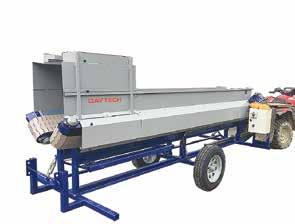


THE NEXT time your partner moans about your work keeping you away from home, point them towards a German native, currently working in New Zealand, who is a wellknown member of many airline and hotel loyalty schemes.
That’s because Tim Koep typically spends around 240 days each year away from home in Northern Germany, work-
vesting, often taking the “I’ve been driving harvesters for over twenty years” attitude, but once they realise the likeable German knows his stuff, they tend to be a little more receptive.
“Sometimes operators are pre-programmed to drive at a certain speed they are comfortable with, failing to realise that today’s modern harvesters produce a better sample when the threshing drum is kept full, or more consistent chop
“Adjust one setting at a time. If it doesn’t make an improvement to the sample or machine, return to where you were and try something different.”
ing for the Agri Expert company, who are contracted to Claas and its importers and dealers around the globe. A machine optimisation specialist for Claas grain and Forage harvesters, alongside the company’s extensive range of tractors, Tim’s task is to help new or existing operators to set up and get the best out of their machines, some of which arrive with seven figure price tags.
Since 2019, Koep has chased the world’s harvests, but more recently arrived in New Zealand during the first week of January, with an expected departure at the end of March. During that period, he will see around 60 users, tackling the usual crops like wheat or barley, before starting into the likes of carrot seeds in the next few weeks.
Working with a widely varied group of users, in terms of experience and age, part of the task is to encourage them to be open minded, putting aside preconceived ideas about how their machine should be operated.
Tim says that initially some older operators are sceptical that a ‘young un’ will be able to teach them anything about har-
dramatically reduced, but in average crops means ‘grabbing’ an extra 50kg, that at today’s depressed prices has a very minimal value.
length when a forage harvester has its feed rollers constantly open and the chopping drum full,” says Tim.
“Of course, this typically means that they will have to drive at a higher forward speed.”
In the case of combines, Tim advocates the “only make one adjustment at a time” principle, given that making multiple adjustments to the likes of drum speed, concave opening, top and bottom sieve settings and fan speed at the same time can lead to unbridled chaos.
“Adjust one setting at a time,” says Tim. “If it doesn’t make an improvement to the sample or machine, return to where you were and try something different.”
Indeed, many owner/ operators are fixated with losses, often saying “I want nil losses”, but experience says that managing losses against daily output requires a compromise.
Accepting losses of around 1% means an operator can push on and get the crop safely stored in the shed, maintaining quality and keeping ahead of inclement weather. Being pedantic about keeping losses to zero means forward speed is
As the saying goes, “you’re never too old to learn!”
@rural_news facebook.com/ruralnews

Tim Koep typically spends around 240 days each year away from home


THE 2025 New Holland T9 SmartTrax with PLM Intelligence includes advanced oscillating roller wheels and vibration dampening suspension mounts to elevate ride quality and prevent uneven wear during field-tofield transportation.
Available for agricultural use with a five model range for 2025 – the T9.520, T9.580, T9.615, T9.655 and T9.700 – it offers power outputs of 475 to 645 rated horsepower.
To ensure ease of daily maintenance, clear track system hubcaps provide straightforward access to
critical components, while automatic track tensioning optimises tension by eliminating manual adjustments –an update said to extend the lifespan of the track belt.
Speed and manoeuvrability are two areas where operators will see the biggest benefits of the SmartTrax system, with an improvement in road speed, up to 40km/h to ensure quicker field-to-field transportation.
The T9 SmartTrax includes belt widths of 30-inch and 36-inch, with the choice of three different belt brands.
Other upgrades include a 47% increase in fuel capacity for model year 2025 T9 SmartTrax tractors, which has increased due to the lower profile on the tractor in comparison to the fuel tank.
Fuel capacity stands now at 1700 litres, meaning extended run times and reduced refuelling stops.
Further features include swinging cab entry steps that automatically pivot as the tractor is articulated, keeping the ladder from extending beyond the tracks and allowing for easier entry and exit from the cab.
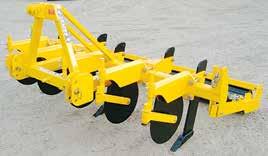

Speed and manoeuvrability are two areas where operators will see the biggest benefits of the SmartTrax system.







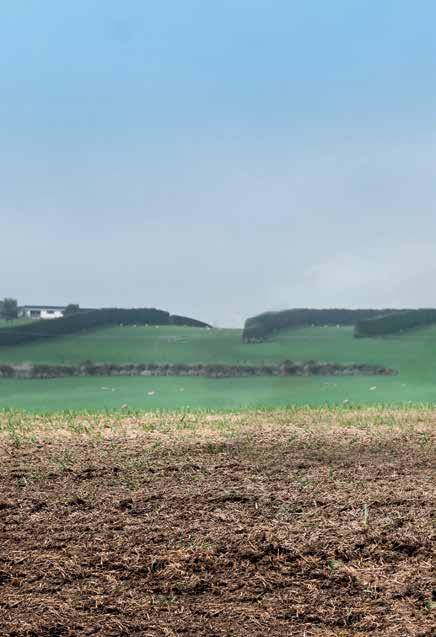


VADERSTAD’S HIGH speed precision planter
Tempo is to get two key updates for 2024, with the addition of new electronics to optimise accuracy, alongside the introduction of a liquid fertiliser system.
The Tempo row unit will be upgraded with Väderstad’s own inhouse, newly developed electronic system WSX that features brushless motors and improved cabling performance. While the WSX itself is new technology on the Tempo, its new features enables it to further optimise the Tempo’s planting accuracy.
“The new WSX system enables the integration of three new features to further improve the already
market leading accuracy of the Tempo planter,” says Greg Moore, imported brands manager for Norwood.
These include Automatic seed singulation, introduced to ensure a precise seed singulation in the seed meter, without the need for manual setting. Each row unit uses sensors to continuously monitor the seed singulation and automatically adjust the singulators for the optimum setting. This is said to save time and increase productivity in the field.
Active hydraulic row unit downforce has been introduced to ensure precise planting depth, working by automatically adjusting row unit ground pressure depending on the soil conditions. In lighter field areas, pressure will decrease

and by contrast, increase in harder or heavier areas of a paddock. The full machine width can be equipped with a single active hydraulic row downforce unit, or individual row units with their own active hydraulic downforce, which
helps improve tramlining and preparing un-planted tracks for the sprayer.
Curve compensation ensures a consistent metering output over the entire planter width when turning, meaning inner row units will temporarily decrease their
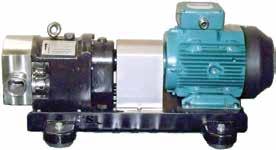



metering rate, while outer row units will increase it. Gyro sensors identify when the machine is turning and adjust the metering output of each row unit to always ensure a consistent rate over the full planter width.
The new features and
electronic WSX system for Tempo L 8-32, Tempo V 6-12 and Tempo F 6-8 units will be available in New Zealand for planting in Spring 2025. The Tempo L 8-24 also gets an upgrade with a liquid fertiliser system equal to the performance
of the Tempo L planter, including easier setting, full control, and row-byrow precision.
Featuring a 2000-litre plastic hopper for liquid fertilisers, application can be in the seed row via the row units or beside the seed row via fertiliser coulters. The system is designed for a wide range of different liquid fertiliser rates without changing nozzles to make it user friendly for the operator. The Tempo can handle standard liquid fertiliser doses from 30 to 200 litres per hectare at a row spacing of 750mm and at speeds of up to 15km/h driving speed.
To control the liquid fertiliser metering, flow sensors constantly monitor the output rate, using real-time feedback to automatically maintain the selected output rate.

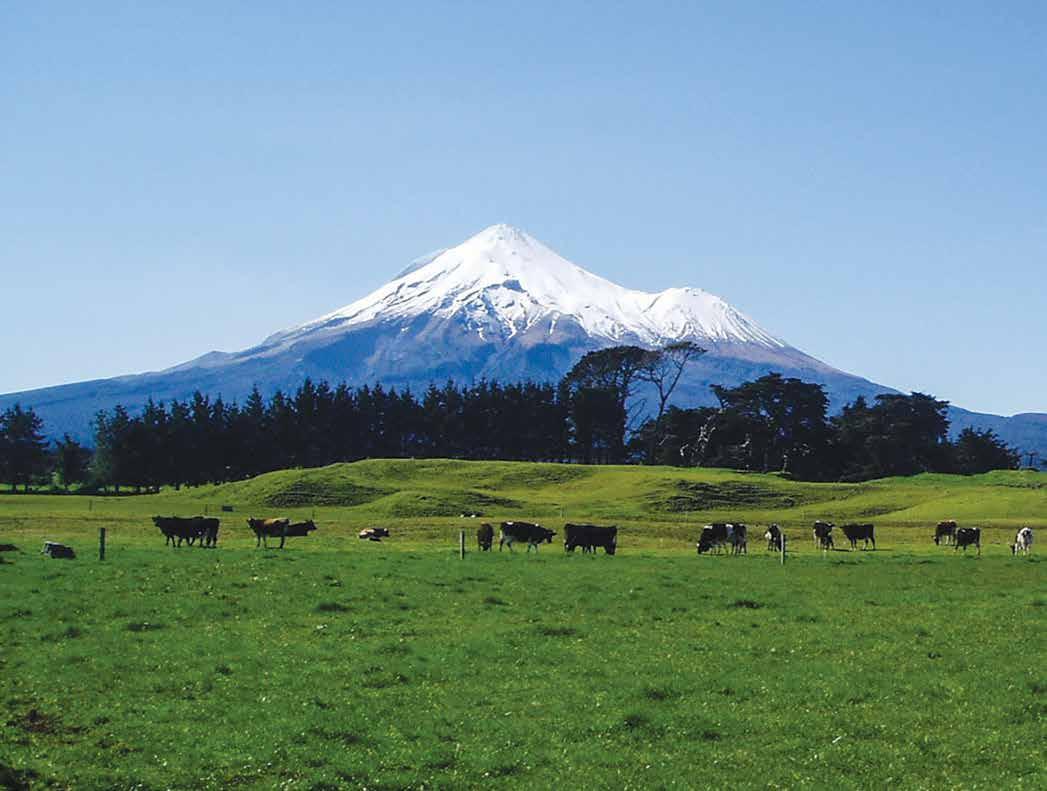
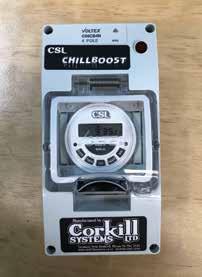

chemical to kill problem weeds in a single pass across the paddock.
WEED WIPING has taken many formats over the last 50 years or more, with some systems achieving much better results than others.
The Ashburton-manufactured Rotowiper system applies more chemical onto the plant than any other type of weed wiper applicator, delivering sufficient
The exceptional results, alongside reduced running costs and less chemical use compared to conventional spraying, raises the question why some farmers are not reducing their weed burden with such an efficient tool.
With land values rising or even holding, giving over paddocks to weeds is

hard to understand, with some farmers still failing to realise that problem weeds will not disappear on their own and there is an actual cost attached to letting them to survive. Weeds will choke out your grasses and clovers, resulting in reduced production, meaning reduced revenue and profit margin.
For a small capital outlay, the addition of a Rotowiper to a farm’s


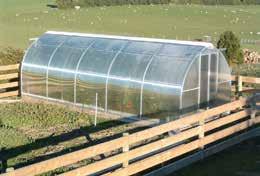

Rotowiper claims to apply more chemical onto the plant than any other type of weed wiper applicator.
machinery fleet allows users to tackle this problem in a cost-effective manner, with the concept on using expensive chemicals when the problem weed encounters the applicator roller. The efficacy of the application is also greatly improved as the machine applies
chemical to the more vulnerable underside of the leaf and the plant stem.
There are also ecological benefits as there is no spray drift, so applications can be undertaken even on windy days, there is no need for a blanket coverage as the applicator only applies chemical to
the weeds that sit above the crop.
Evolving since its introduction, larger Rotowipers have been added to the range, with the 9-metre FU 900 three point linkage machine released in 2022, while 12-metre machines have become more common
and bespoke machines created with a 24-metre working width.
As technology has evolved, these larger machines can now be equipped with auto functions and easy to use electric over hydraulic controls.
www.rotowiper.com
NORWOOD HAS signed an exclusive New Zealand distribution agreement with the Burel Group for the SKY Agriculture brand.
Effective immediately, the deal is an extension of the existing relationship Norwood has with the Burel Group that will celebrate its 30th anniversary in 2024.
As previously reported, the Burel Group has consolidated its Sulky, Sky, and Prolog retail brands into the SKY Agriculture, single brand strategy with a new look and feel.
This new partnership will mean Norwood has continued access to the traditional Sulky fertiliser spreader range and the range of seeding products, previously imported under the Sky brand by a different NZ distributor.
“The Sky brand, with products like the EasyDrill direct drill, is

already well known in the market thanks to the great work done by the previous distributor, Tulloch Farm Machinery, the previous distributor. We thank John and his team for developing the Sky brand in New Zealand and we’re keen to build on their success,” says Rod Gardner, Norwood national product manager.

The refreshed SKY Agriculture brand will see a change in livery across all products, with Sulky’s traditional pale blue and red colour scheme to be replaced with twotone grey and the new SKY Agriculture badge.
Norwood will supply the products across its 19 locations throughout New Zealand.

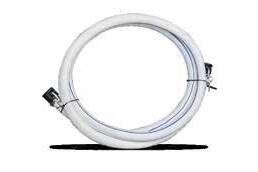

performance range.
HARVESTING AND tractor specialist Claas has developed and field tested a combine harvester fitted with a part electric drive system.
In addition, working with fellow German company Liebherr, it has also developed a 100% electric telehandler.
The semi-electric combine, concept allows self-propelled machines that would normally be powered by a 626hp (460kw) powerplant to run on a less powerful 536hp (400kW) engine.
A further benefit is that the smaller engine can operate at 1600rpm, instead of the normal 1800rpm.
This smaller engine and reduced speed is compensated for by a 40kW electric motor, that in more powerhungry situations, such as in high-yielding areas, travelling uphill or emptying the grain tank, provides the mechanical driveline with a short term electric power boost.
Replacing the conventional maximum output provided by the diesel block, the electrical support enables peak loads to be bridged, allowing the combine to consistently operate in the optimum
Flattening peak loads, the hybrid concept is claimed to reduce fuel consumption by up to 10%. In easier conditions where the full power of the diesel engine is not needed, a generator provides a regenerative function, converting excess power into electricity to be stored in the 3kWh battery.
The semi-electric system operates in the low, sub 60v range, so does not require the complex safety precautions associated with higher-voltage drives.
Claas says that this means maintenance can be carried out without any special training.
At this stage, the project is still at the early concept and testing stages, and it is not yet known if the system will make it to the production stage.
In other Claas news, the company is the latest to approve hydrogenated vegetable oil (HVO) for its products, although it is already widely marketed as a direct drop-in replacement for diesel fuel.
However, the company notes in its latest bulletin that while battery power may be suitable for lighter applications, an electrically powered Jaguar forage harvester


would need to be twice the size and weight to provide the same power and range as the current diesel models, so for the foreseeable future, “traditional” fuels will continue to be important.
Keeping the diesel engine as the primary power source is seen as essential by the company. Dr Martin von Hoyningen-Huene, who heads the tractor division, notes that “there are no real alternatives to the combustion engine
for high-performance agricultural machines in the foreseeable future”.
The company also states that gaseous fuels such as methane or hydrogen also have significant disadvantages in terms of their energy density and thus their energy storage requirements, while the infrastructure for supply and storage of these materials is still a long way away.
@rural_news
facebook.com/ruralnews
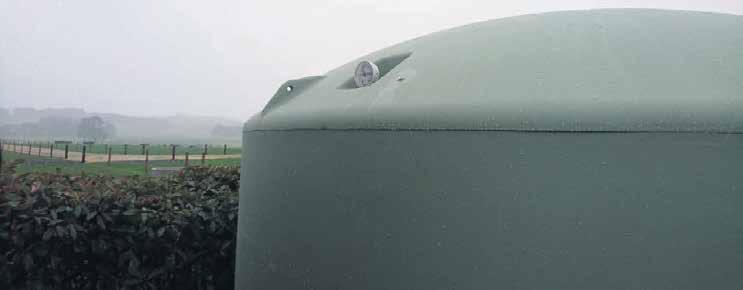







GIVEN THAT agriculture


Zealand’s North Island by TRC Tractors in Feilding, who offer the manufacturer’s extensive range. This includes tipping, dumper, flat bed,




Working with customers, TRC set out about to configure a trailer that would be an ideal fit for the New Zealand market and resulted in Stewart Trailers building the bespoke NZ5500 units.
As the designation suggests, the trailer is 5500mm long, 2700mm wide, carries a 16,000kg rating and importantly allows two rows of bales to be carried comfortably. As part of the standard package, the NZ5500 is supplied with dirt sides and a removable silage bin, to offer a versatile package to meet a wide range of needs.
With regional field days just around the corner TRC will use the Northland and Central Districts events to launch the latest evolution of their NZ bespoke with the New NZ6100 trailer. Building on the outstanding reputation of the NZ5500, the 6100 stretches the body to 6100mm long, retains the

for the paint to adhere to, but importantly, also ensures a dust free process to ensure a perfect finish. The paint itself contains plastic polymers to result in a “Flexipaint” finish that resists impact damage and surface penetration, helping to retain the finish and extend the working life.
2700mm bed width and increases the load capacity to 20,000kg.
The new variant includes a steered axle, air bag suspension, spring drawbar, complemented by standard 650-50 R22.5, or optional 710-50R22.5wheel equipment. Like the NZ5500, the design detail sees the body’s chassis rails set inside the main chassis rails, resulting in a lower centre of gravity, which, complemented by the 2700mm body, offers exceptional stability on rolling or hilly terrain.
The extensive use of Hardox steel in the base and walls of the main tub, offers substantial weight saving, allied with greater strength and durability, with maximum impact resistance against rocks and stones dropped into the body. The attention to detail is carried forward with the painting process. That starts with steel shot blasting to provide an effective key
Running on Granning, 10-stud commercial grade axles, equipped with 420 by 180mm braking equipment, the system is air activated and load sensing, so is well suited to high-speed transport situations.
An extensive range of standard fitments offers ease of use, while the trailer is also “cover ready” to allow the subsequent fitment of a folding top cover for load security. Product specialist Berg from TRC Tractors says farmers and contractors are recognising that by spending a little more, they are “investing in the best quality available in the market”.
“This results in durability, longevity, ease of use and most importantly, reduced maintenance costs.
“While we have designed the NZ 5500 and now the new 6100 specifically for NZ conditions, we can also create bespoke specifications for other models in the range to suit individual requirements.”
Visit www.trc.co.nz or see them Central districts at site C25-C27.

Combine Harvesters can now be complemented by the advanced weed control capability of Redekop’s Seed Control Unit (SCU) which destroys harvestable weed seeds in a single pass.
The Redekop SCU mounts to the combine chopper and injects processed chaff directly into the residue stream for excellent distribution over the entire cutting width. In doing so, it destroys weed seed, helping to manage weed resistance for the next seasons.
Mounted behind the cleaning shoe of the harvester and fully integrated with the machine, the system is designed to work in all crop conditions using one set of mills, negating the need to swap mills in response to changing crop or harvest conditions.
The reversible mills can destroy up to 98% of harvestable seeds before the material is directed back to the residue stream, mixed with straw and spread evenly over the entire cutting width, to ensure minimal weed pressure and better crop establishment in subsequent seasons.
SCU for X-Series will be available from 1 February, following three years of testing on X-Series working in Canada, Australia and Germany. JD Production System Manager, Ben
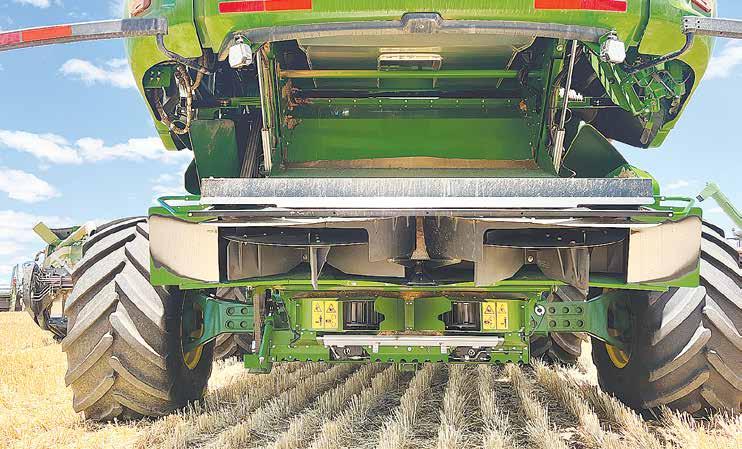
Kelly, said all the benefits already seen with the SCU on S-Series Harvesters are now available to the owners and operators of X-Series.
“The SCU is already a proven performer on the smaller S-Series and we are excited to have collaborated with the team at Redekop to adapt the technology to be suited to the power and capacity of the bigger machines,” Kelly said.
“The collaboration with Redekop now opens the door for the X9 to be fitted with an effective weed control system, helping to grow the efficiency of small grain and cereal cropping operations.”
Redekop’s Trevor Thiessen said the trials of

the past three years had created an iteration of SCU that could manage
the additional volume presented by the X-Series, without compromising

throughput. “The X9 has significantly more
capacity than the S-Series, so we had to ensure the mills taking
the material off the rear of the harvester could manage that,” Thiessen explained. “We tested in Australia and Canada, but we were particularly concerned about the amount of MOG it would encounter in European conditions.
Testing in high yielding German wheat and barley crops of up to 11.5 tonnes/ha, gave us confidence the unit could perform anywhere.”
Redekop worked closely with JD using a pre-production X9 for initial fit-up, fabrication, and design tweaks, with fine tuning of air flow, shoe pressure, load limits on the drive line and other key components. The SCU is fully integrated with the G5PLUS CommandCenter and can be easily engaged or disengaged as required.



FROM NOVEMBER 1,
2023, Ministry for Primary Industries’ Mycoplasma bovis Eradication Programme has been contracted out to disease management agency
OSPRI, as it enters a long-term surveillance phase. The change marks the transition of the whole programme to a management agency, with the goal of eradicating M.
bovis in New Zealand by 2028.
OSPRI took the opportunity to reinforce how well the programme had dealt with the issue, given that most other coun-
tries believed the task was impossible, but also reminding farmers of the need to be vigilant.
NAIT was designed to provide fast and accurate tracing of animals (deer and cattle) to support disease management in NZ, provided farmers “bought into” recording and supplying movement data in a timely manner.
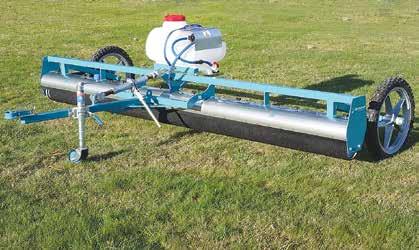



Louisa Sahin, regional partner extension services for OSPRI, says the best way for farmers to help shut the gate on diseases like M.bovis is to keep accurate information about themselves, their farm and their herd via the NAIT system.
Noting that disease can spread rapidly through any locality, OSPRI highlighted the need to record and report animal movement onto
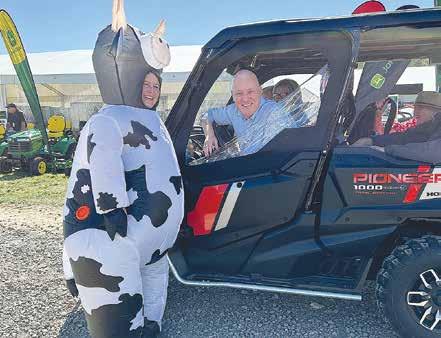
or off farms within 48 hours of any such actions. Sahin notes that she had heard reports of some stock owners being reluctant to tag animals, maybe because of losing tags accidentally.
Rather, they preferred to tag animals as they left a property, likely to result in mistakes at the last minute. Helping visitors to Southern Field Days recently to have a little fun with this seri-
HANDYPIECE IS a fully portable shearing handpiece being used by thousands of farmers and ag workers, in diverse roles across the globe.
While the main use is sheep shearing, it is also finding favour with those operators crutching, dagging, cow tail trimming and cattle branding, alongside alpaca and goat shearing, Tb testing of deer, grass sampling and plant trimming.
The Handypiece Pro has variable speed ranging from 2400 –3500rpm.
Dagging, crutching and trimming cows’ tails operate well at a mid-speed of 2700rpm, while anyone wanting to get a nice cut
ous message, a roaming inflatable cow called Lucy was seen to be posing for the obligatory selfie with young and old, and even Prime Minister Christopher Luxon.
www.ospri.co.nz

while shearing can wind it all the way up to 3500rpm. The brushless motor means the battery lasts even longer and it is possible to crutch up to 300-400 sheep from one battery charge.
The Handypiece kit comes with 12 amp/hr and 6 amp/hr batteries, battery charger, a belt, holster and pouch all made from heavy-duty leather, 5m extension cord and a carry kit bag.
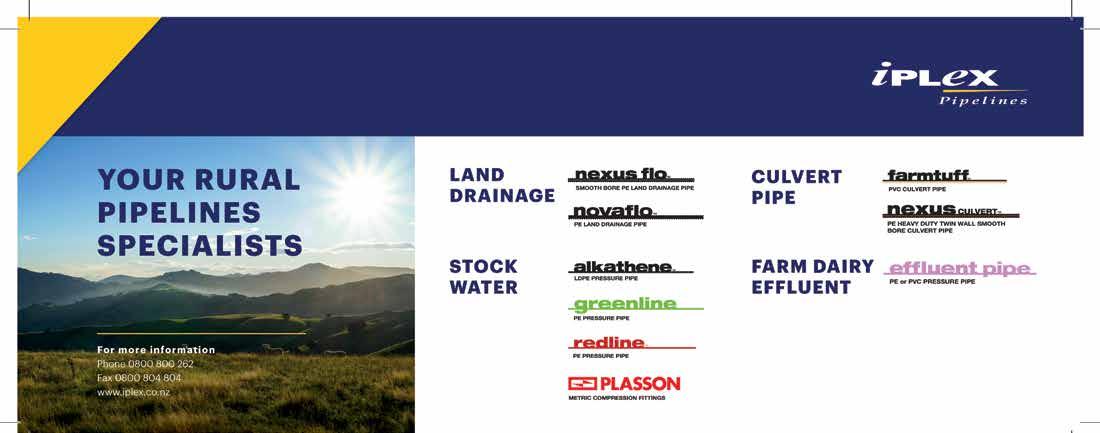
USUALLY A task given to higher horsepower tractors, stone picking looks like its moved down the horsepower charts, to anyone with an ATV or UTV, with the Stoneless trailed stone collector.
Dane Søren Kristensen spent many years removing stones by hand from paddocks on his family´s 400ha farm. “It was a tiring job that had to be done every year.”
After searching for an easier solution he decided that over the years the stone picker market had lacked development and in most cases was centred around larger tractors.
This led to the creative Dane setting out to devise a solution to make it a much easier and less power-hungry job. His first prototype was ready for testing in 2018, and the first commercially available machines were running in Denmark during 2019.
Manufactured from galvanised steel with a tare weight of 400kg, carried on four flotation tyres to reduce crop damage, the Stoneless is a simply-made and robust
machine that offers the flexibility to allow users to collect stones between other jobs.
Working offset behind the ATV or UTV, with a recommended minimum of 500cc, operation is controlled via a handlebar mounted box. When a stone, from 6cm to a maximum of 50cm, is approached, the operator lowers a hydraulically operated digger plate that can also be used to tease stones out of the ground.
A rotor then holds the stone against it, before both rotor and digger plate are raised and the stone drawn into the 500kg capacity hopper.
If the stone is too large to transfer to the hopper, the grab action can be used to move them off the paddock.
Depending on the numbers of stones in a paddock, it is said to be possible to clear stones from up to 5-10 ha/hr. When the hopper is fully loaded, the hopper tips rearwards allowing it to tip at the headland or into a loader bucket.
To date, more than 300 units have been sold in Denmark over the past four years, with plans now in place to export
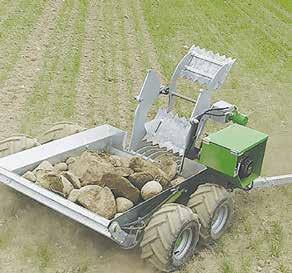

machines to other countries. Mr Kristensen suggests his machine has great potential, commenting, “there is a need for a solution that addresses
the challenges of finding qualified labour, but also makes stone collection an easy activity that you can always find time for.”
www.stoneless.dk
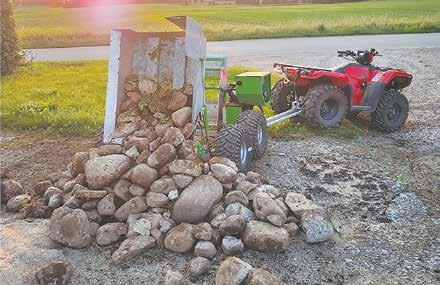



and especially in Europe. The familyowned business managed to more than triple gross income before taxes, to €522.3 million from €166.3 million in the previous year, while net income increased to €347.1 million.
During the year, Claas picked up awards, with the new Xerion 12.650 Terra Trac being named Tractor of the Year 2024, while the entire series was honoured with the Farm Machine 2024 award in the large tractor category.
icant improvements in North America,
Claas also completed its combine harvester product family by launching the Evion, a new series that is espe-
cially tailored for small farms. Together with the Lexion and Trion series, the company now offers a modern and wide-ranging combine harvester product range.
Moving away from its traditional method of in-house development to a route of alliances and partnerships, Claas joined forces with the start-up AgXeed and the long-standing partner Amazone to set up the world’s first multi-manufacturer autonomy alliance, 3A – Advanced Automation & Autonomy.
The goal of the collaboration is to
advance the automation of agricultural processes and the development of agricultural machinery that is capable of working autonomously.
Last year also marked two anniversaries for the company, including marking 50 years since the company’s first self-propelled forage harvester was built in Harsewinkel, to a position today where the Jaguar machines dominate the global market.
The family business also looked back on 20 years of Claas tractors, with the 150,000th tractor rolling off the assembly line in Le Mans in early
KUBOTA LAST month used the UK LAMMA Show to test the water with its new 200hp, fourcylinder 09-series diesel engines. Said to be targeted at the likes of self-propelled
sprayer and mixer wagon manufacturers, while also suitable for static installations such as gensets and irrigation pumps, the 5.0litre 9-series has already been a success in the construction sector for sev-
eral years.
2019, to be followed four years later, just in time for the 20th anniversary, to a figure that is estimated to stand at 200,000.
Looking forwards, the company warns that it is preparing itself for a more difficult market environment, noting the pace of economic activity is slowing perceptibly in the core markets in Central and Western Europe and North America, due in no small part to high inflation and mounting geopolitical tensions.
@rural_news
facebook.com/ruralnews


Having tweaked the power and torque characteristics to suit ag and forestry applications, the maximum output of 210hp occurs at 2200rpm, which the company says is well within the tested tolerances of the engine.

currently under testing with Japanese genset maker Denyo. The unit is based on Kubota’s existing spark-ignition engines used in forklifts and usually run on LPG, methane or petrol.
To deal with hydrogen’s lower power density and burn characteristics, a wastegate turbocharger has been added, alongside extensive modification to the manifolds and injectors.

For those users that think that 200+hp is too much out of a four cylinder, Kubota says the block’s modular format means another two cylinders can be added should extra ‘boogie’ be required at some point. Indeed, when the 09-series first
broke cover in 2017, there was a 7.5-litre six-pot in the line-up, so it might
be a case of watch this space. In other news, the
company also showcased a 3.8-litre hydrogen-fuelled power-plant,
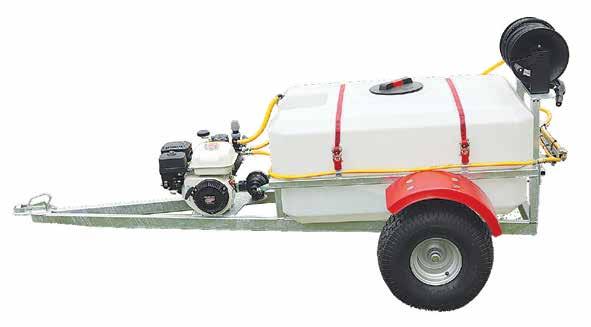

The company notes that, for now, the biggest challenge remains around on-board fuel storage.







